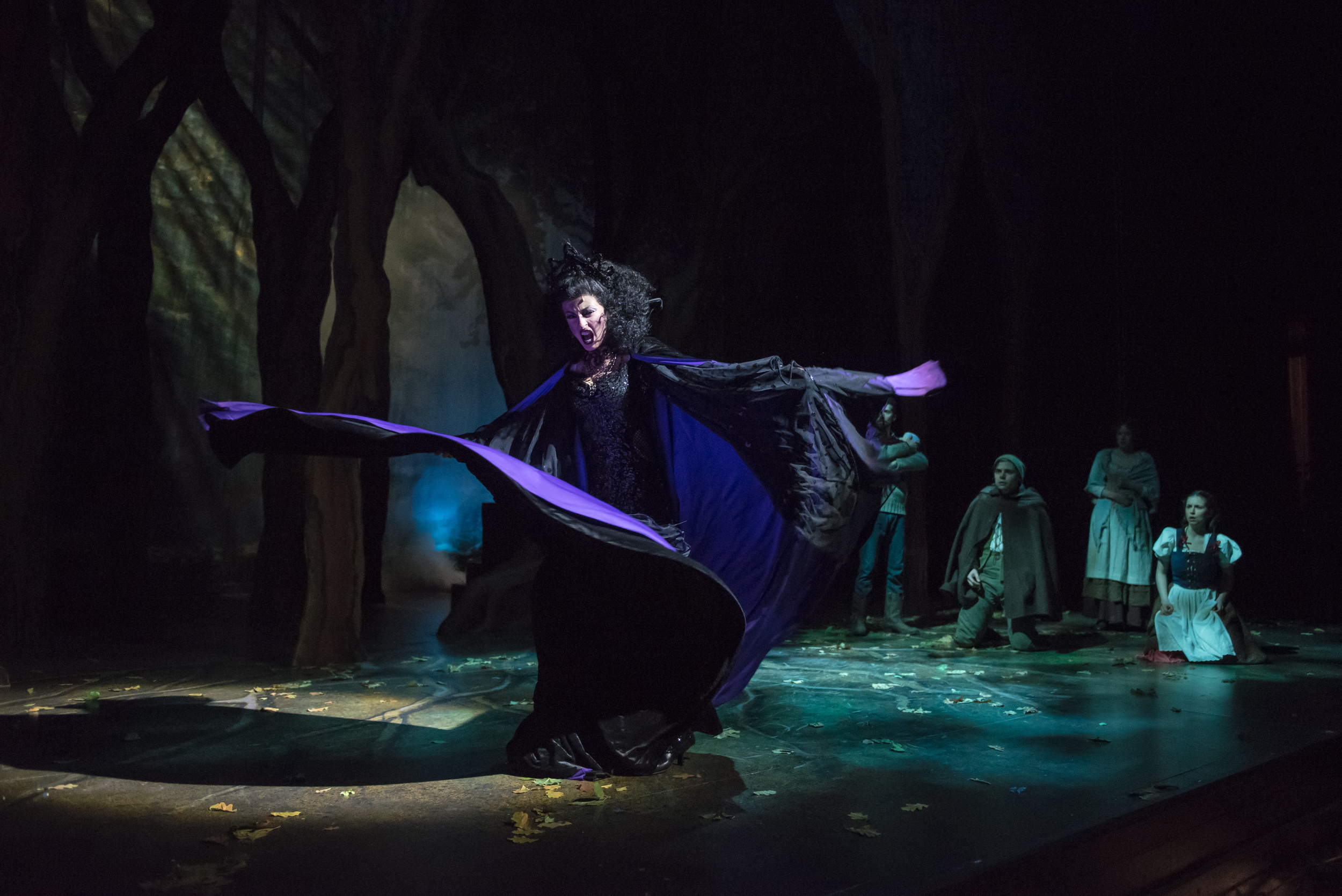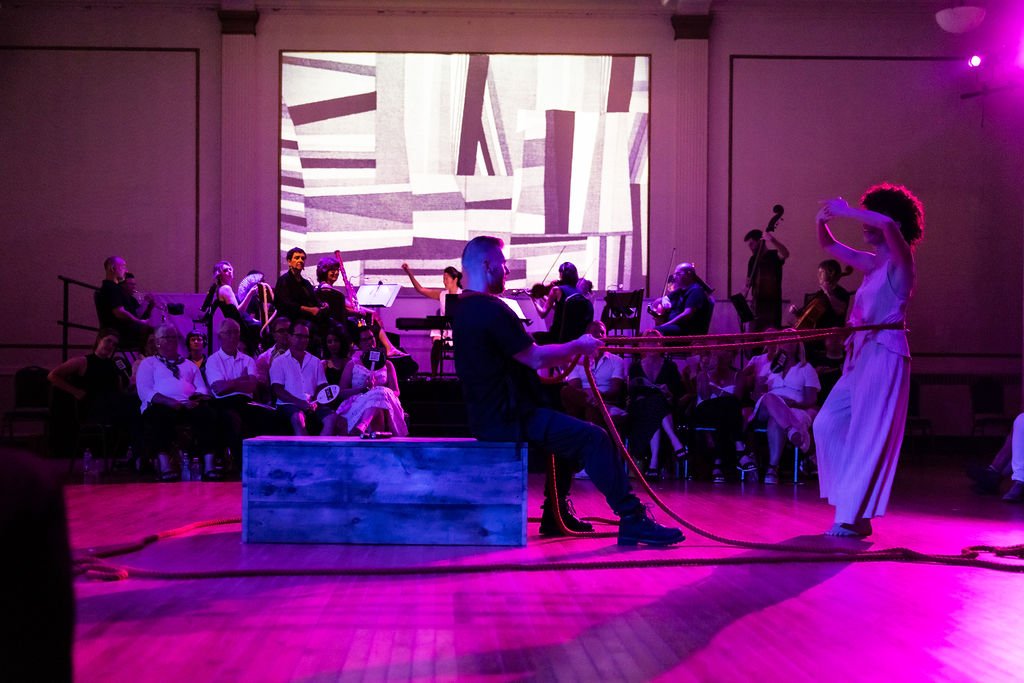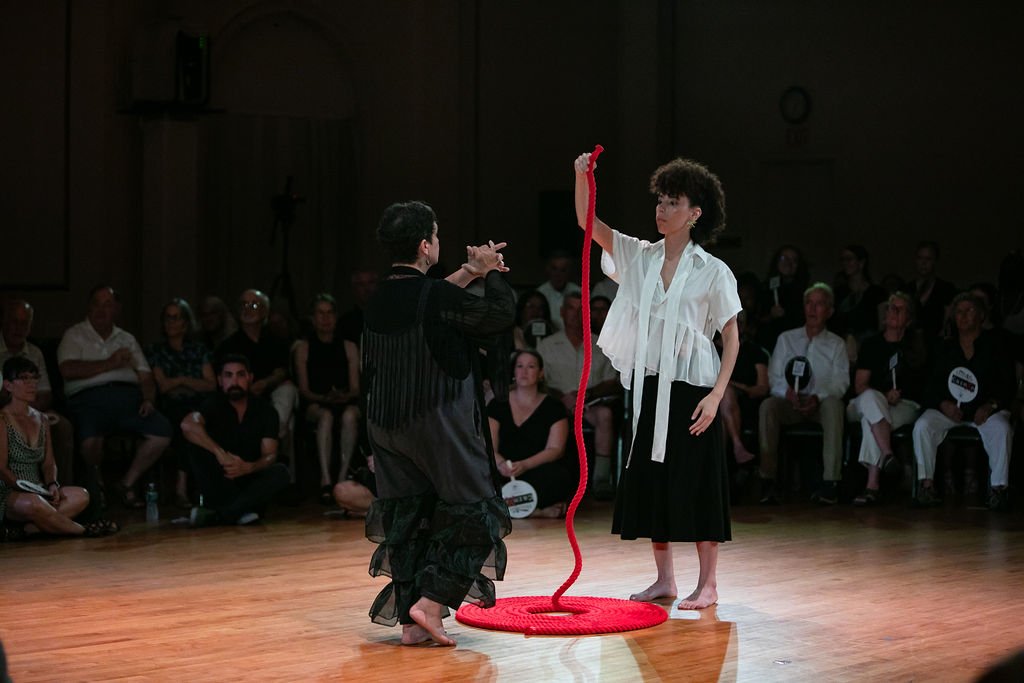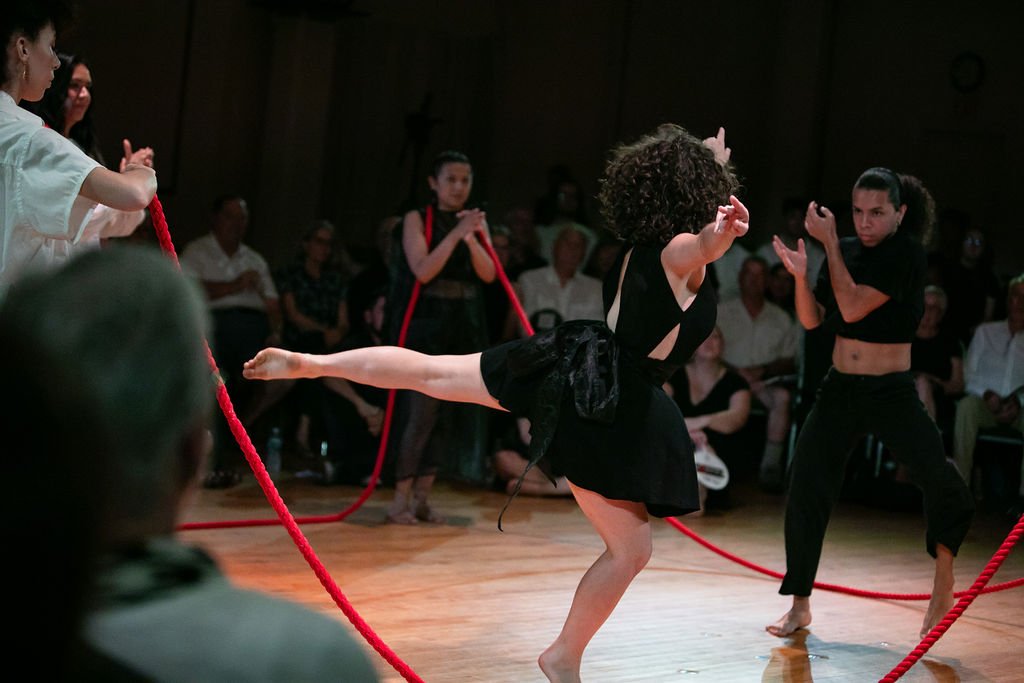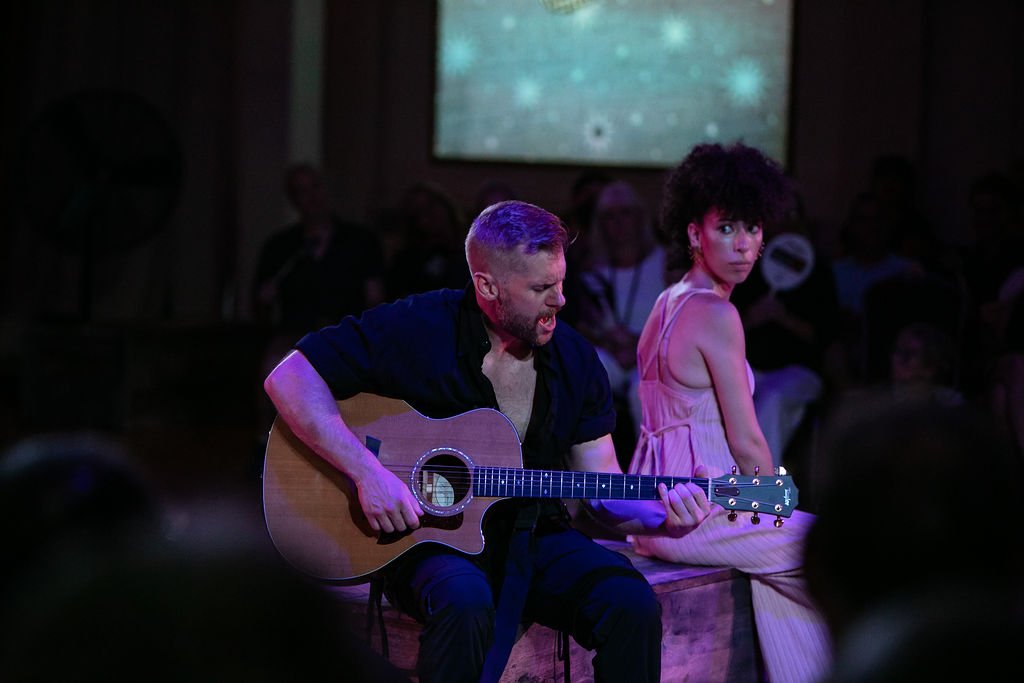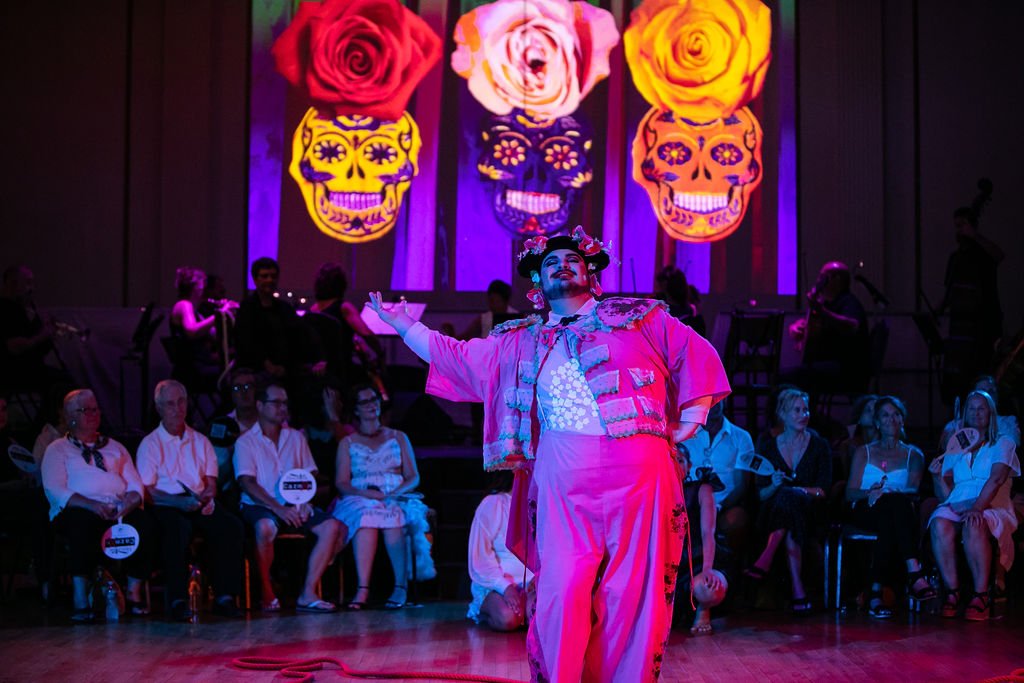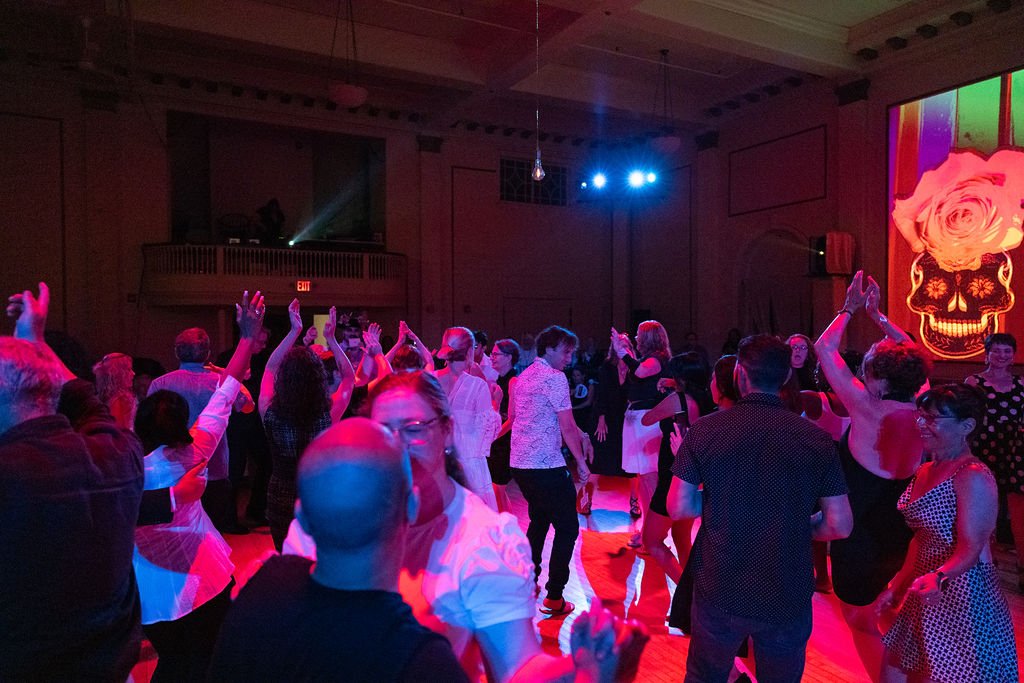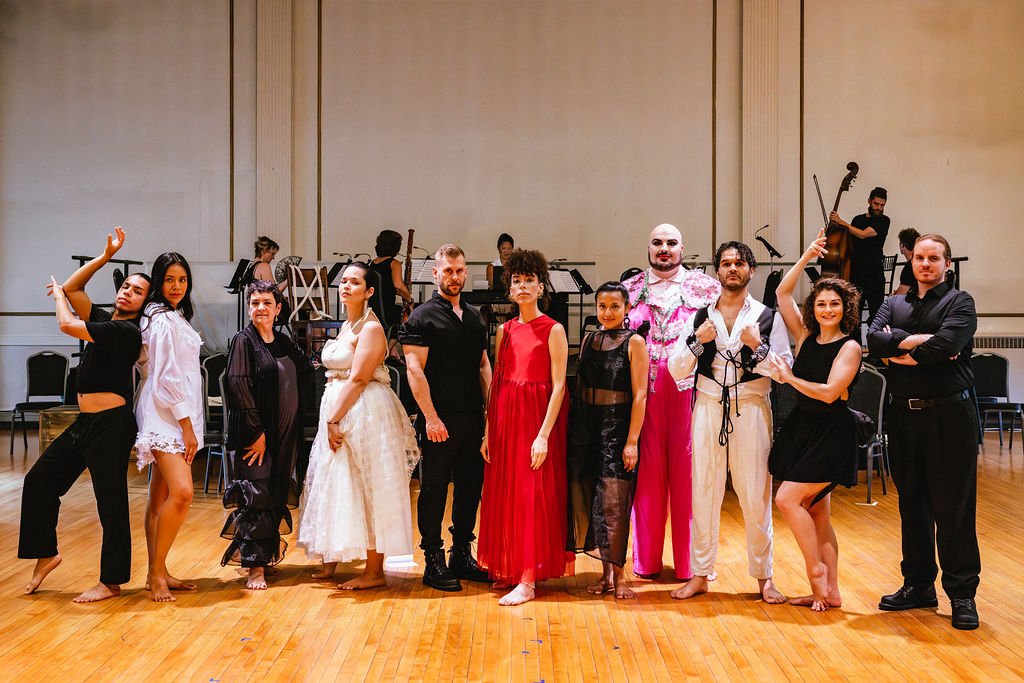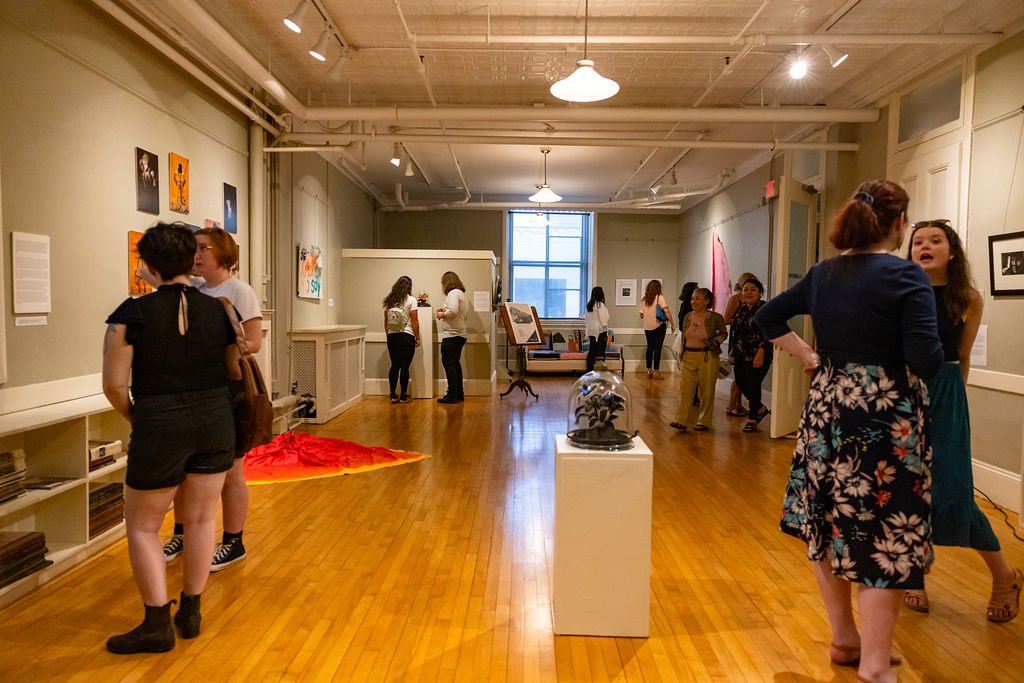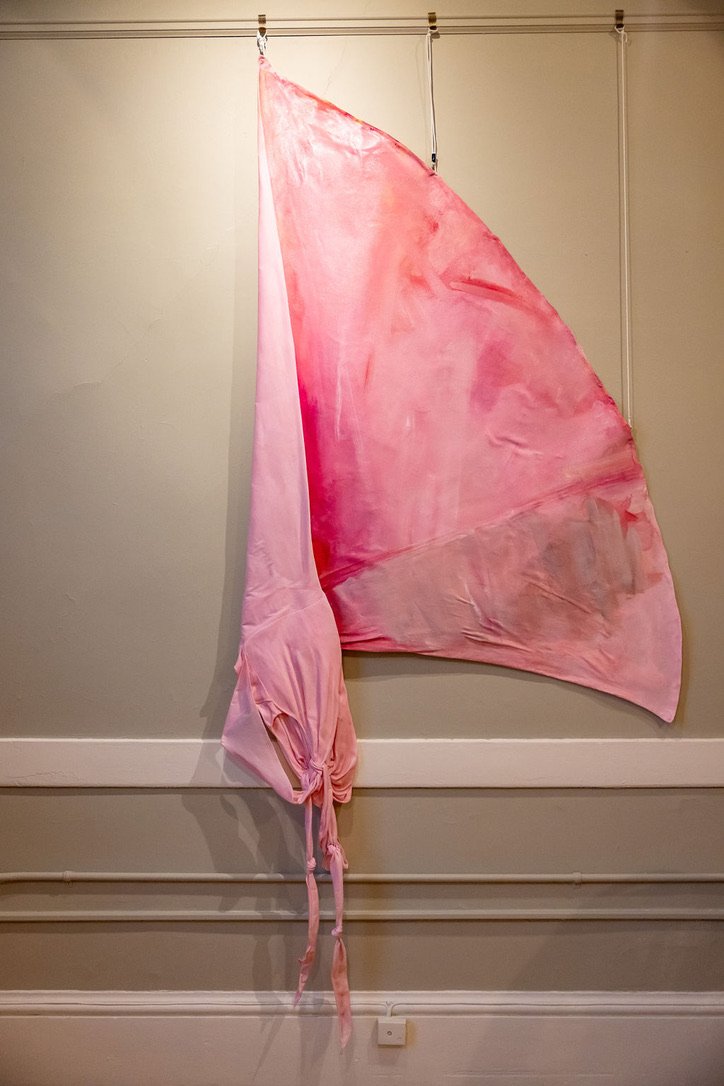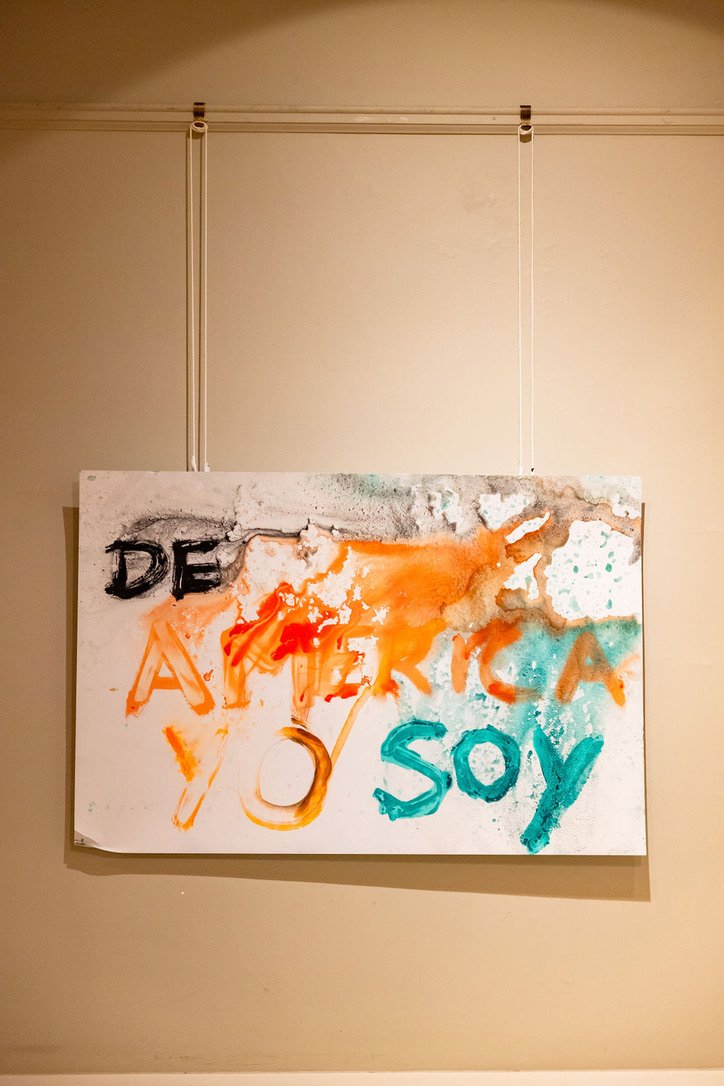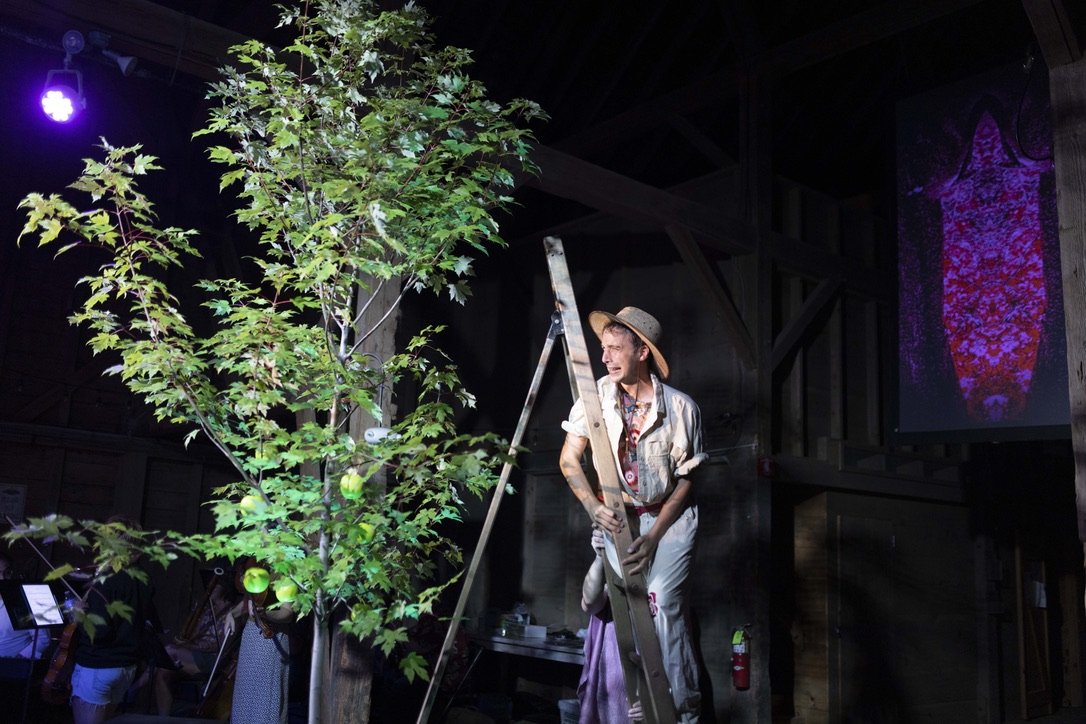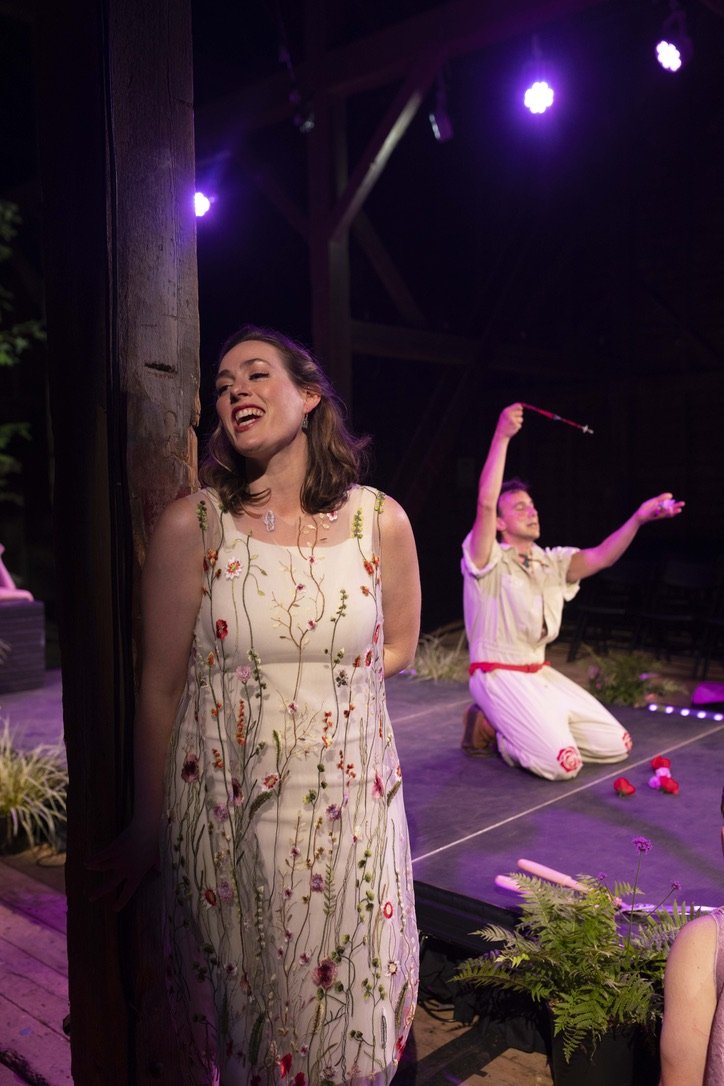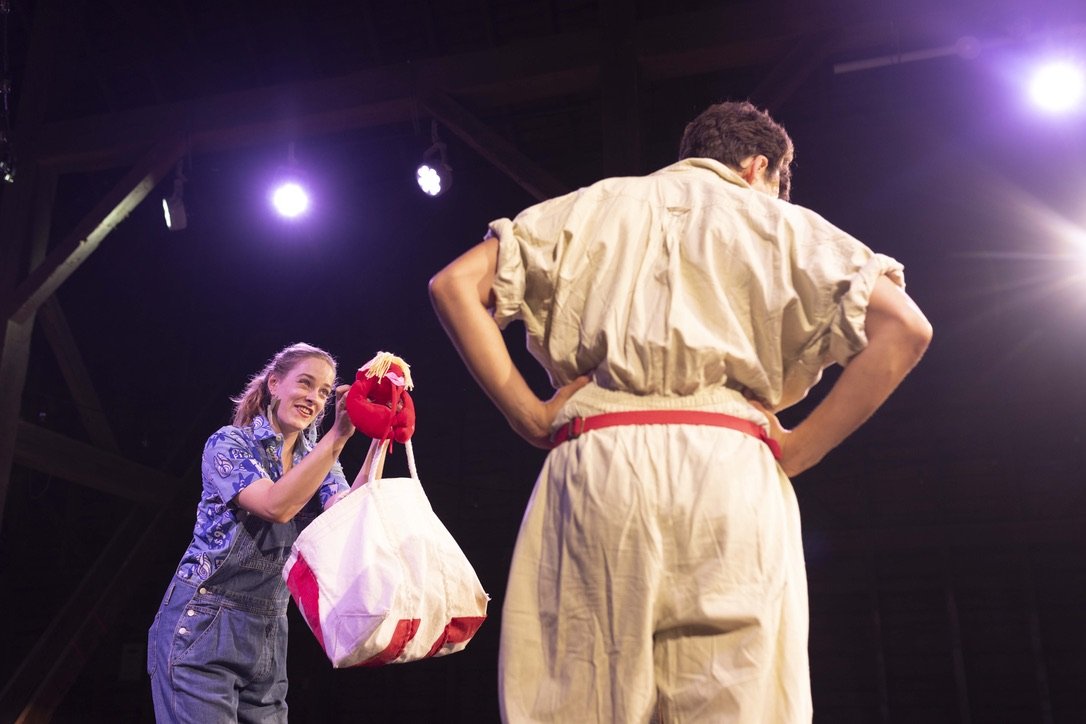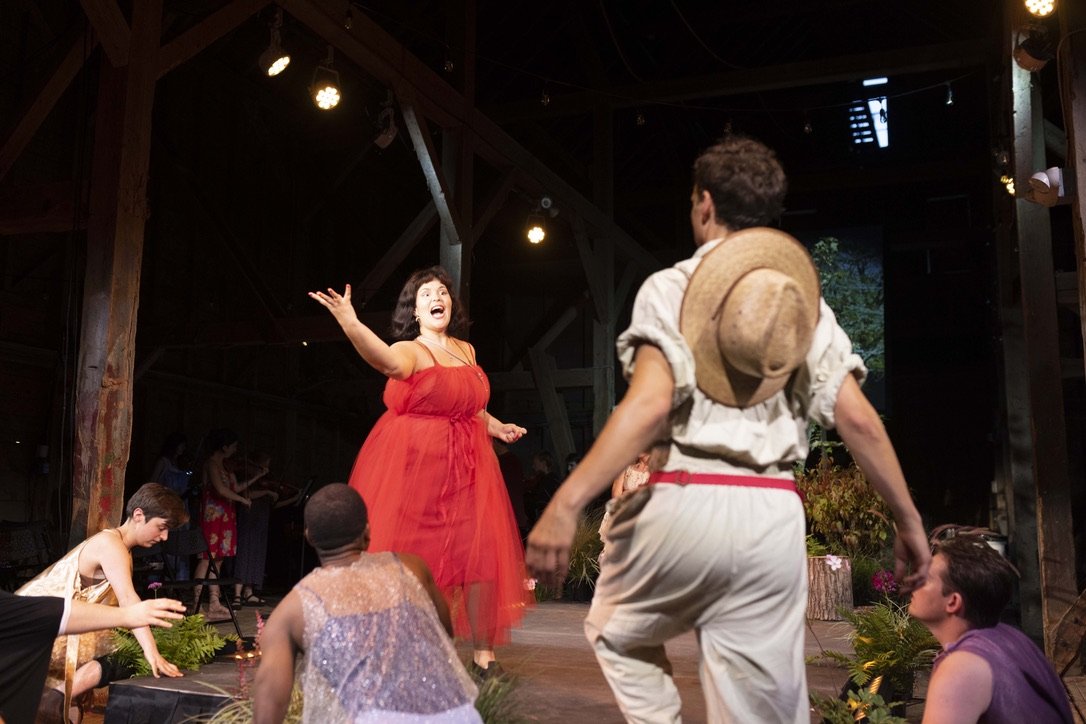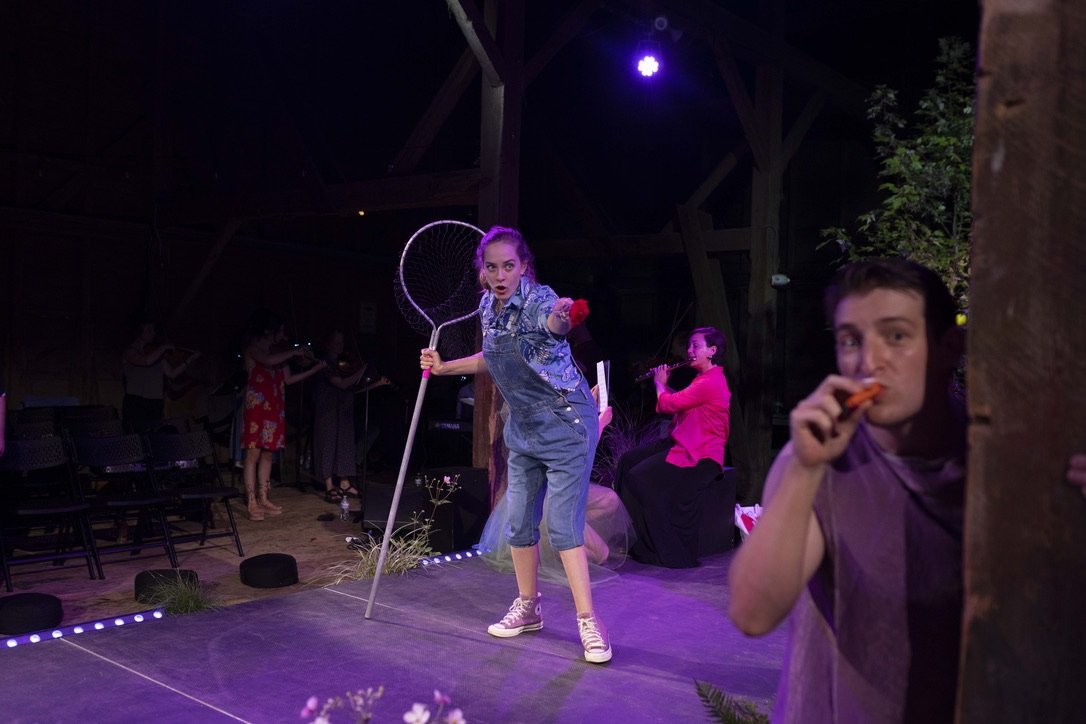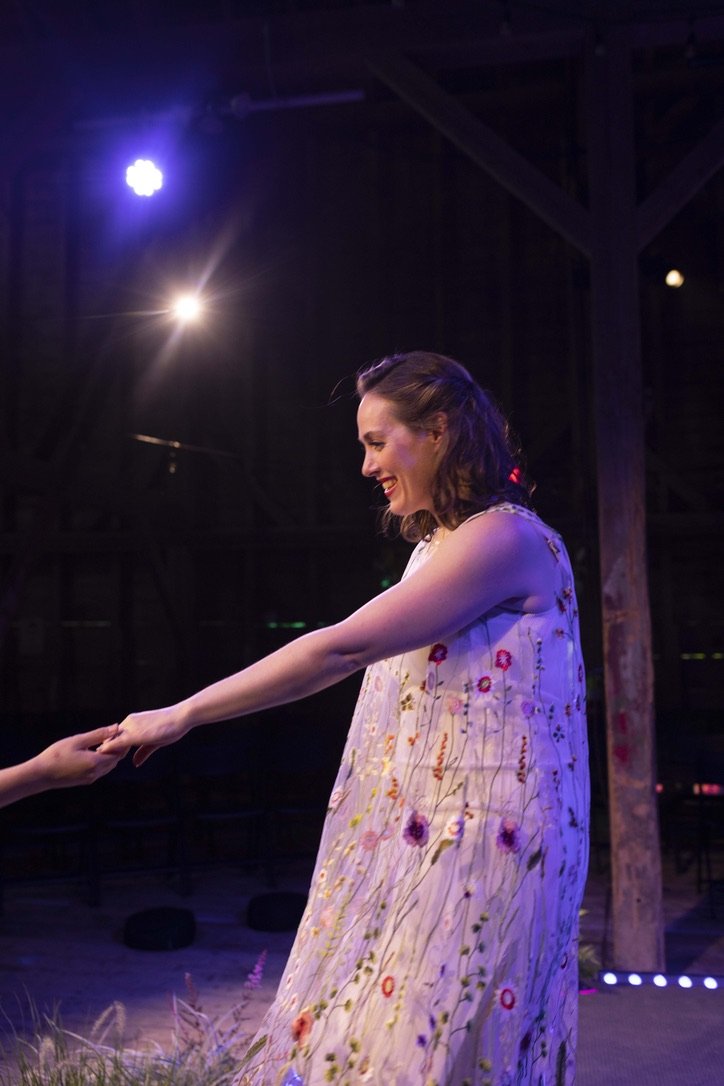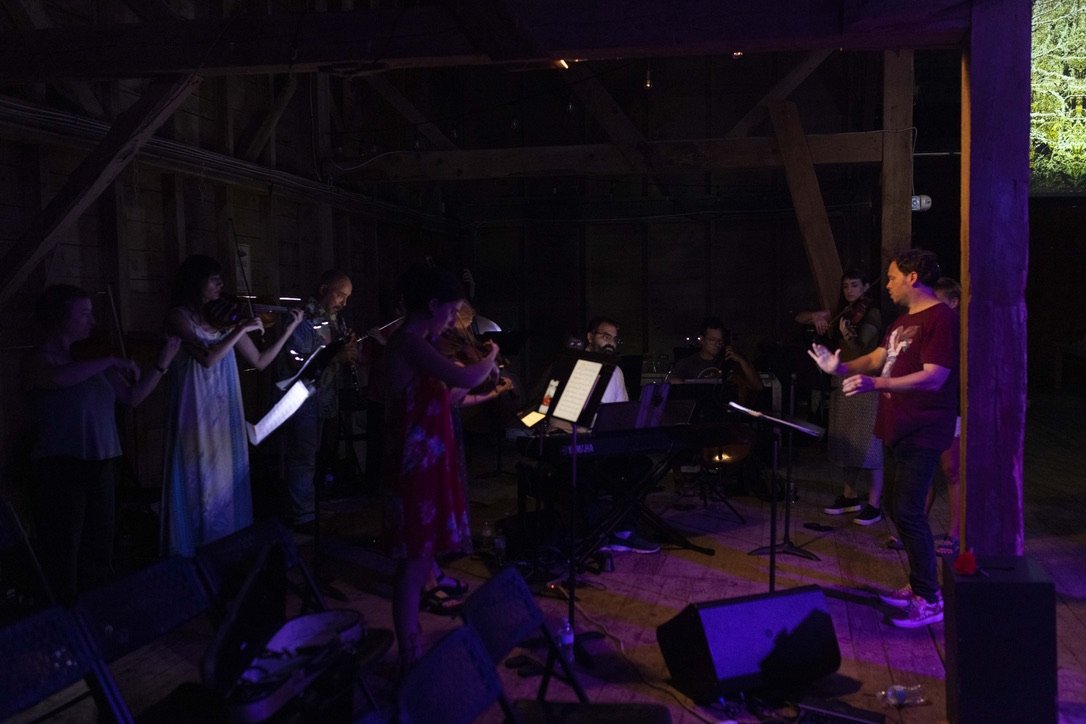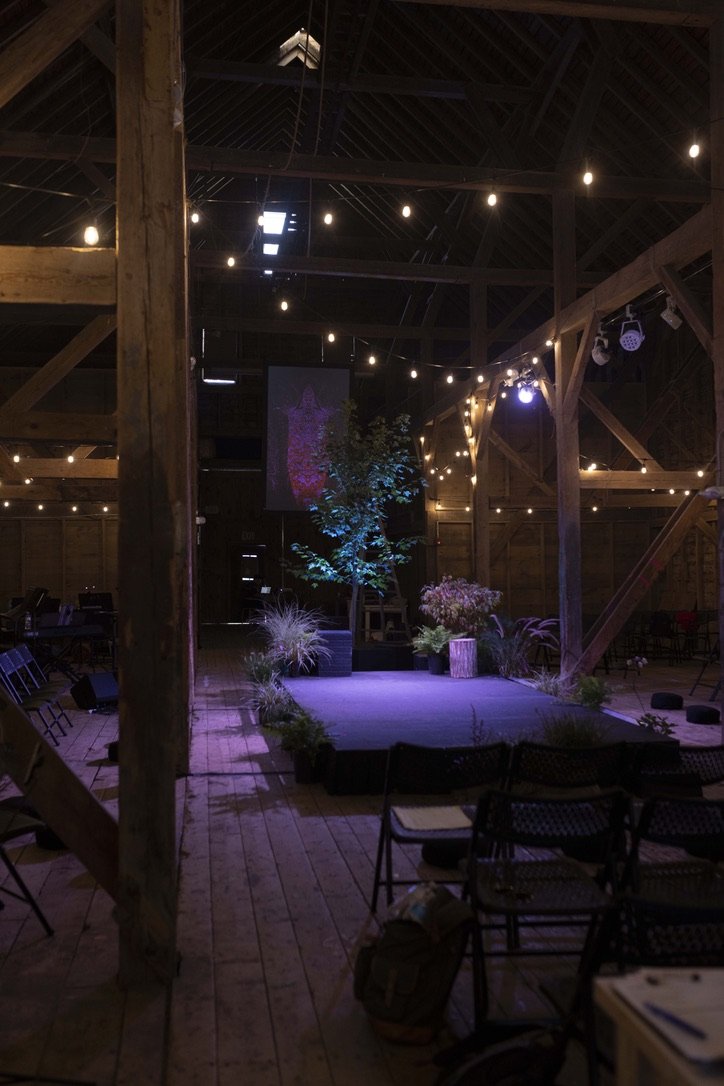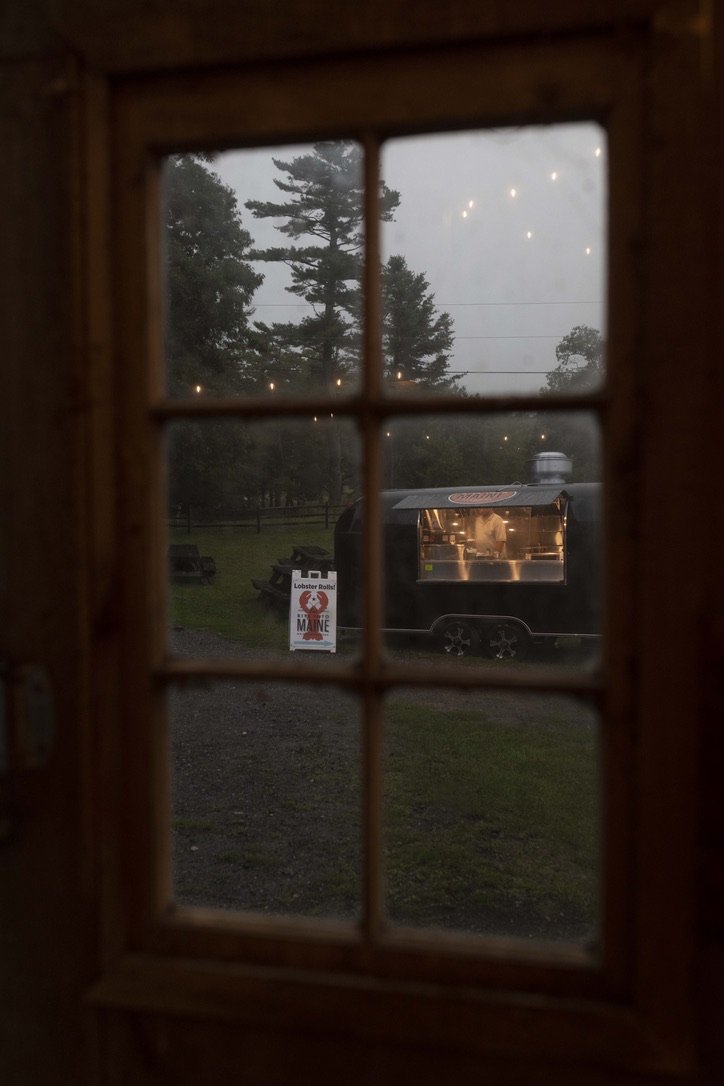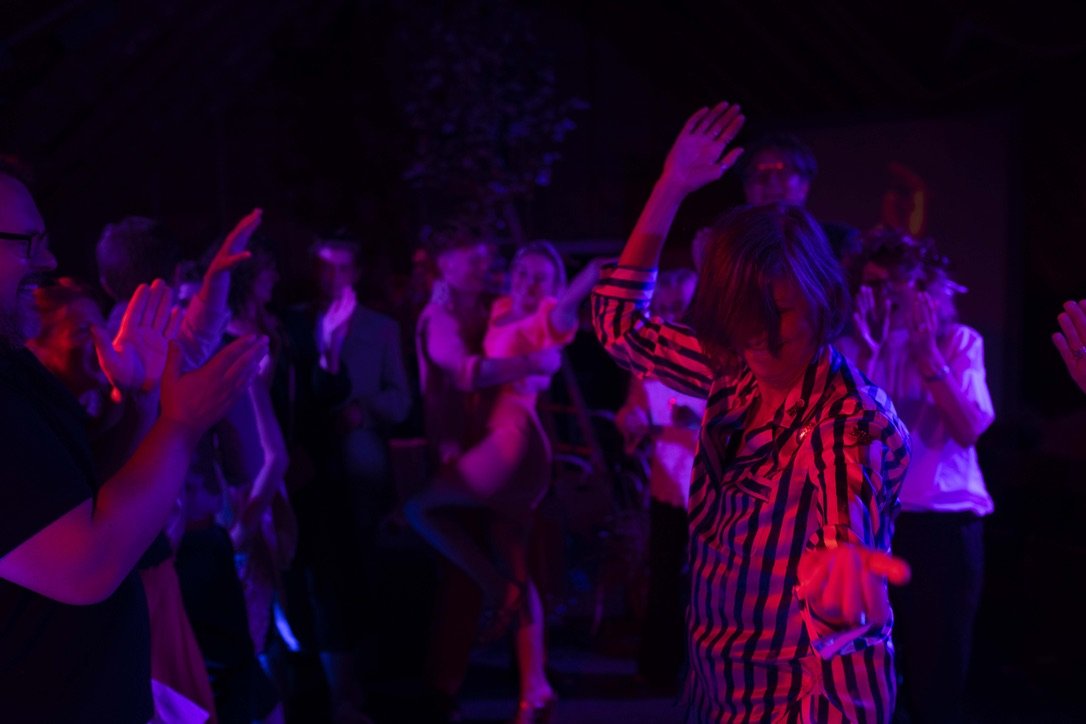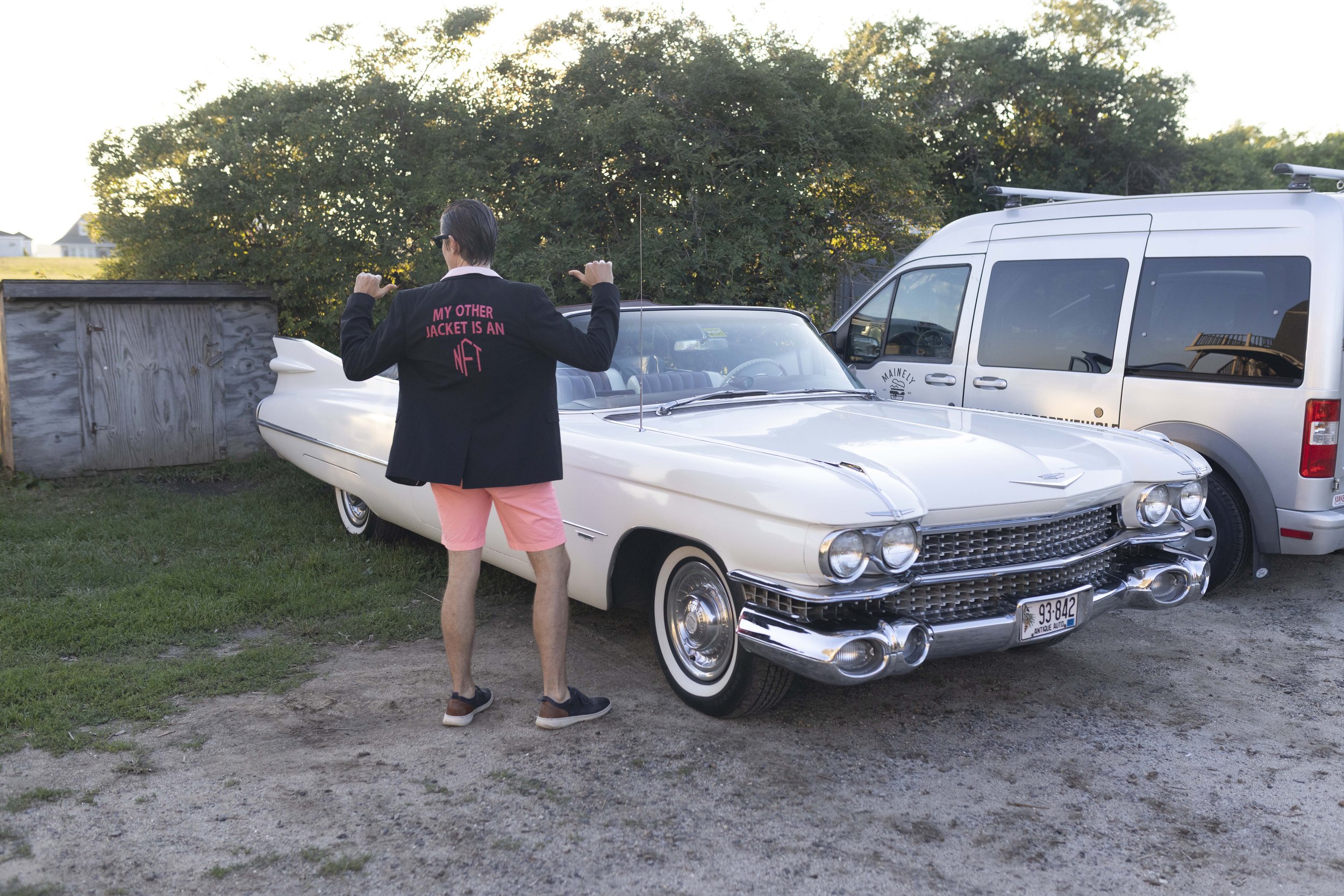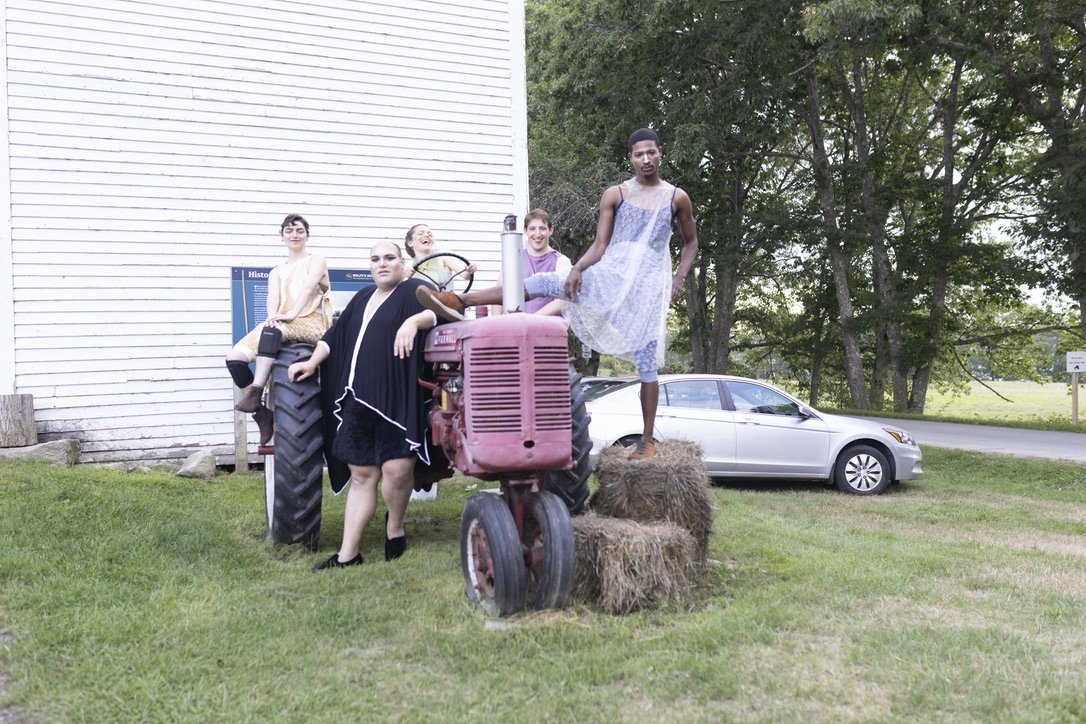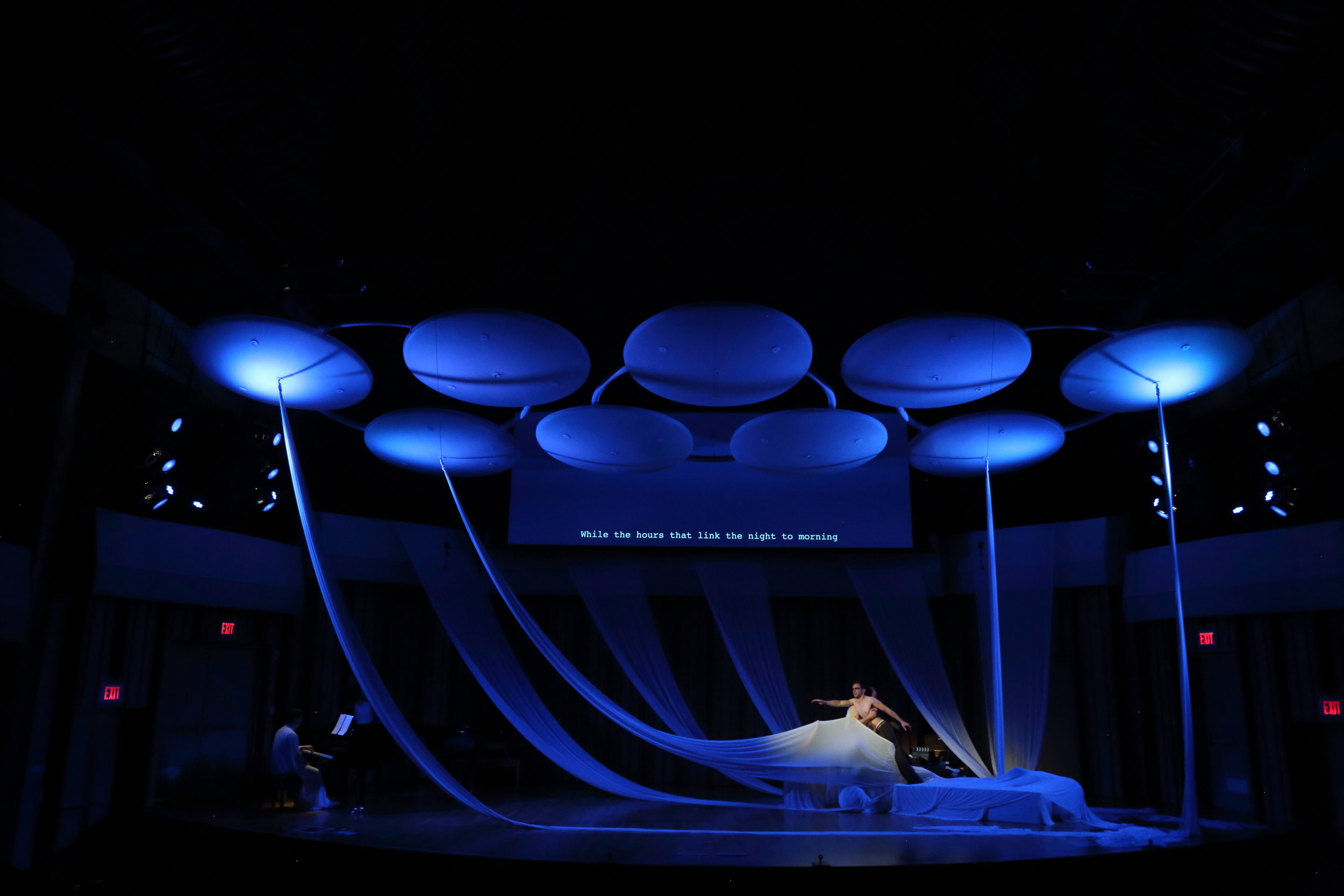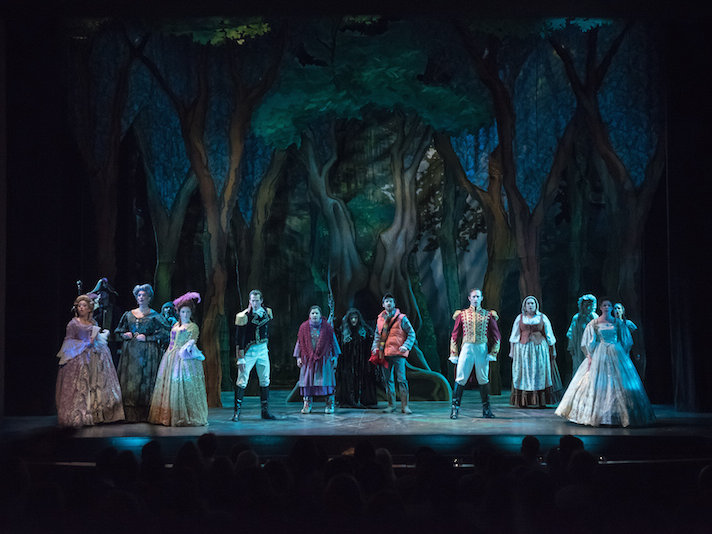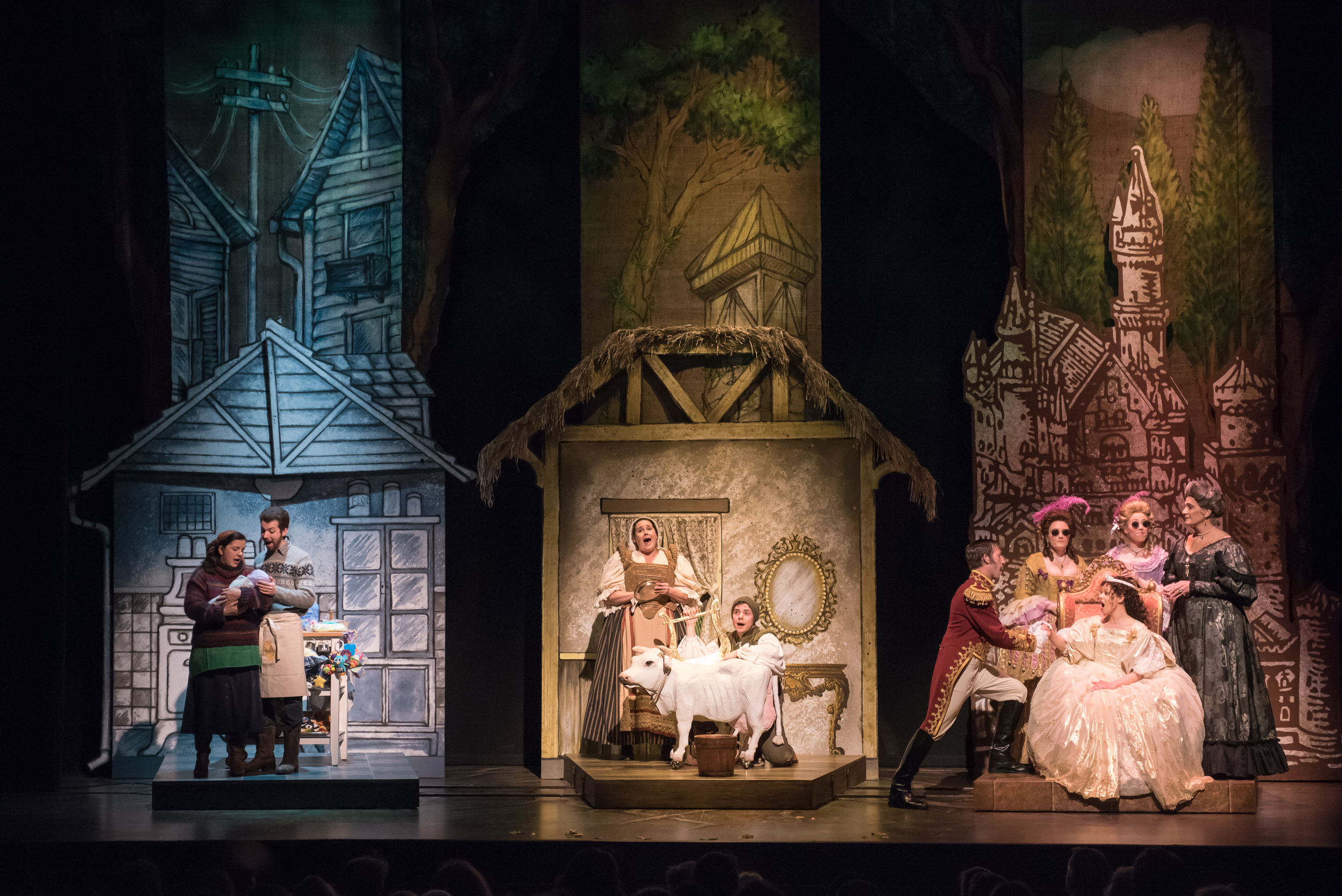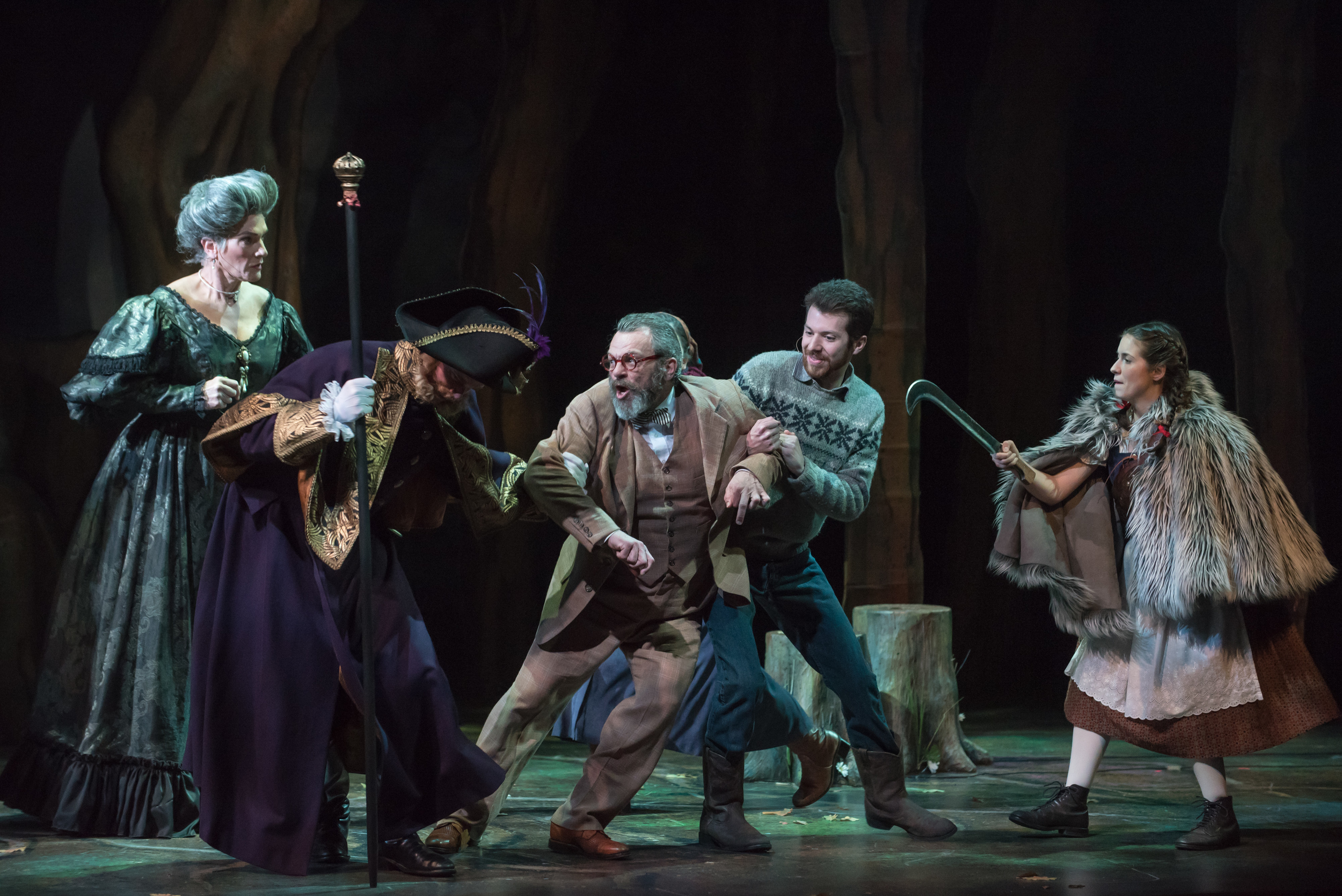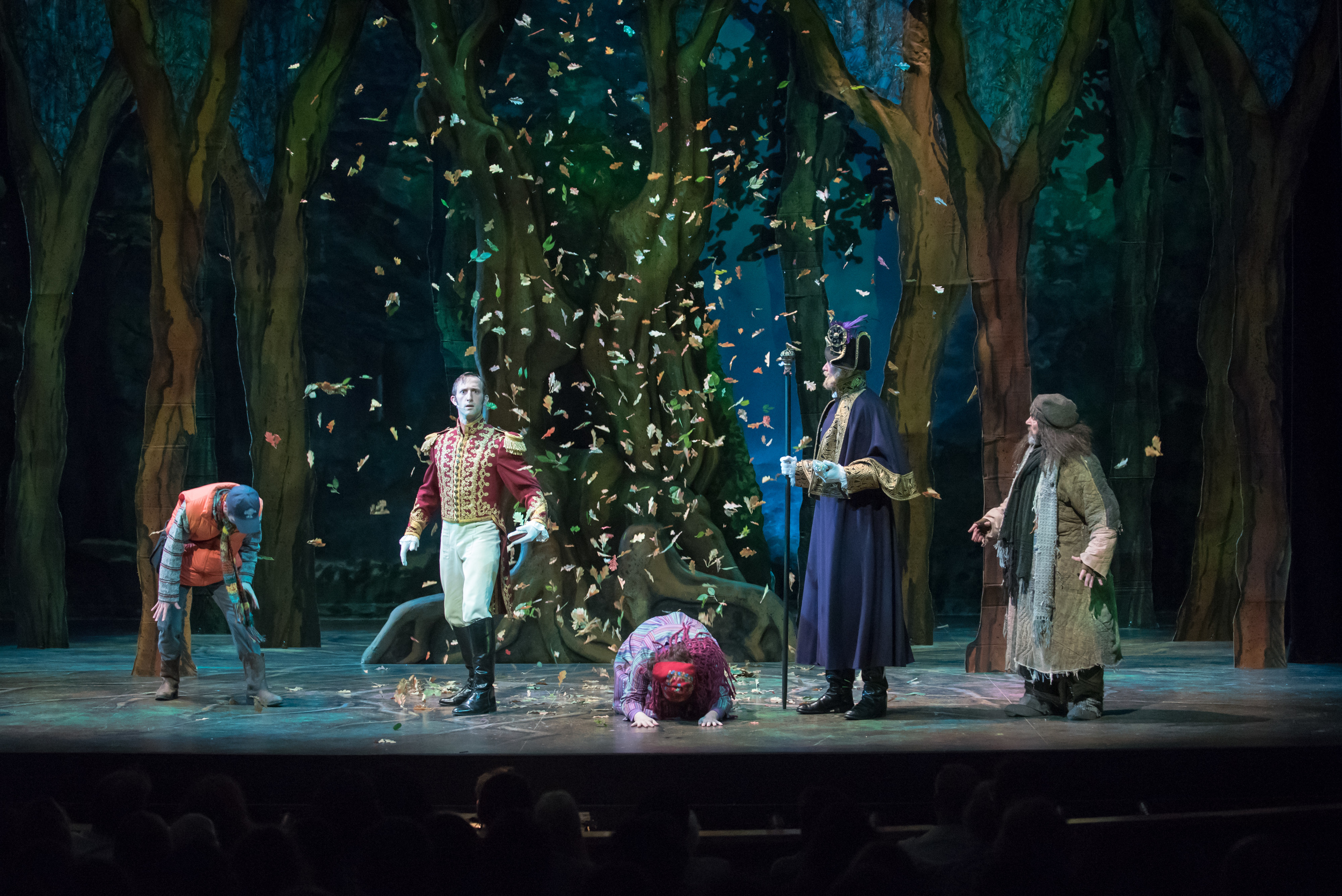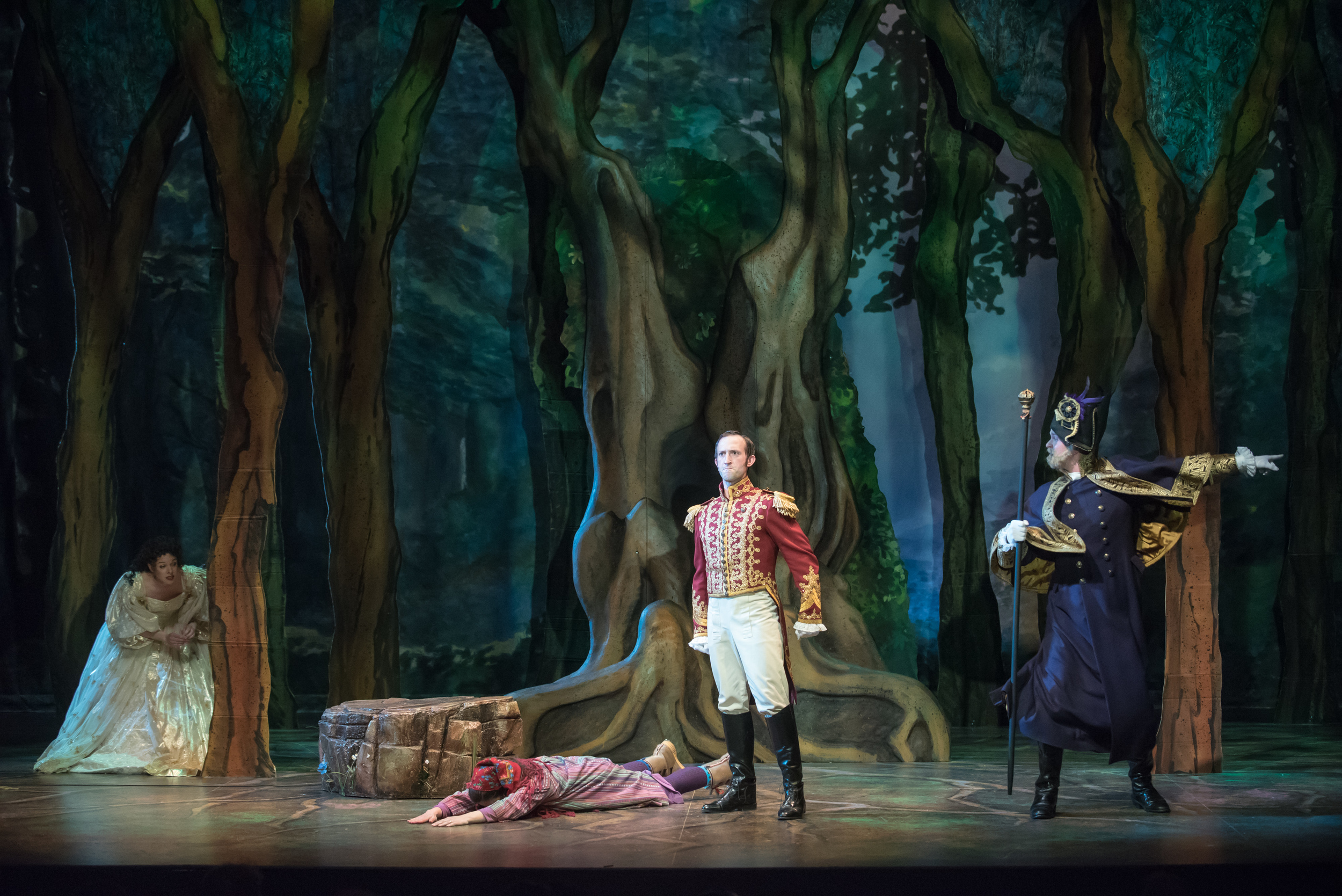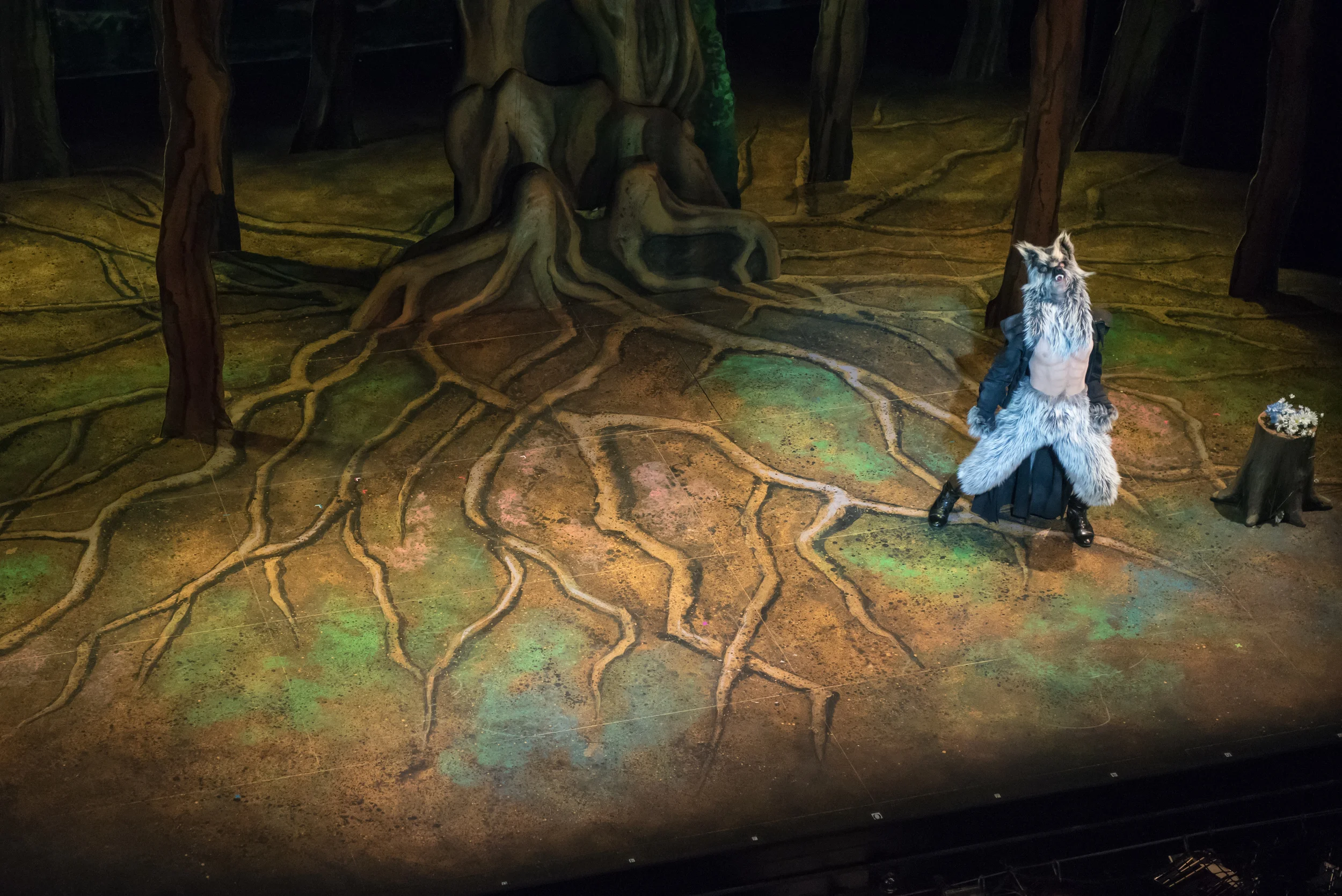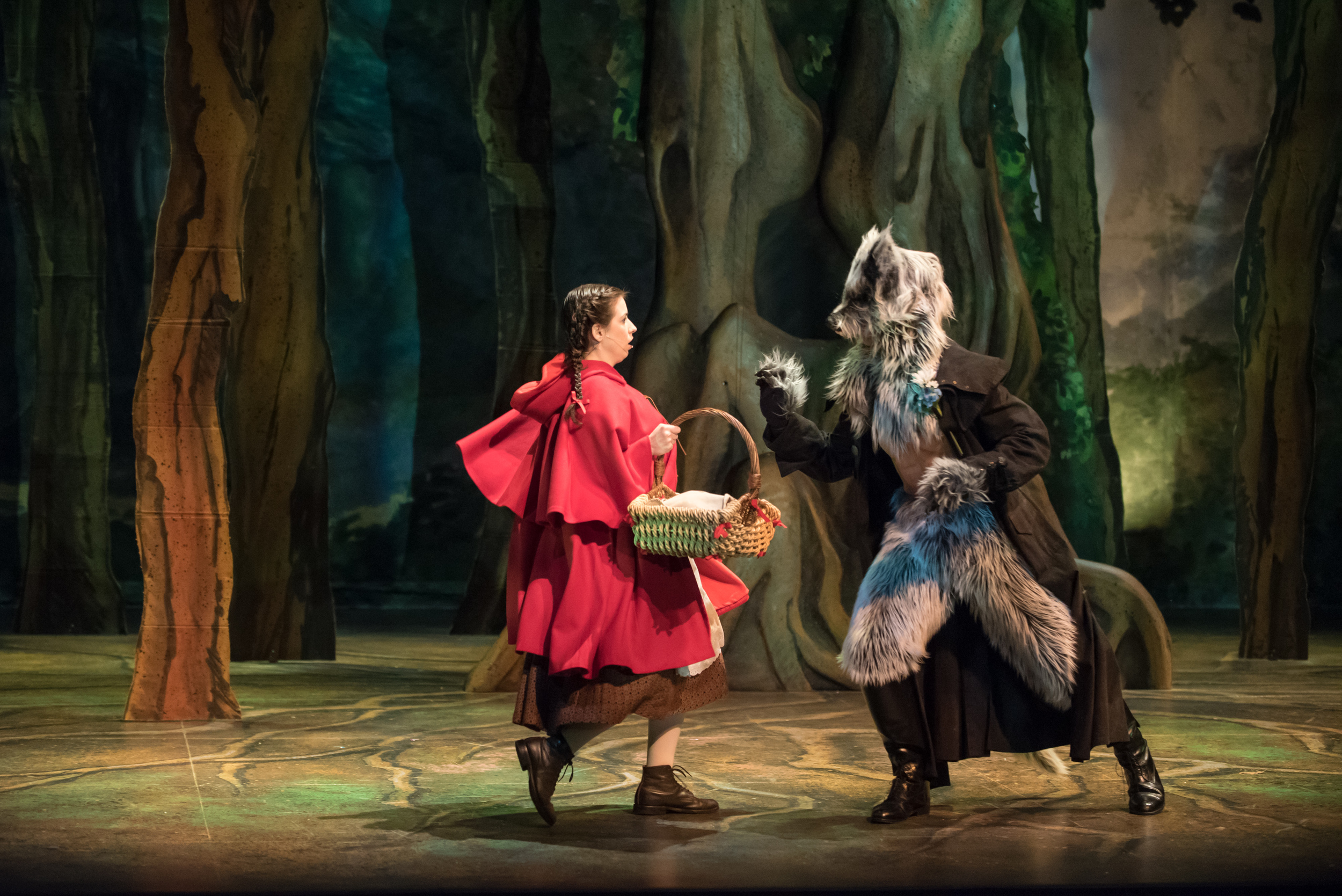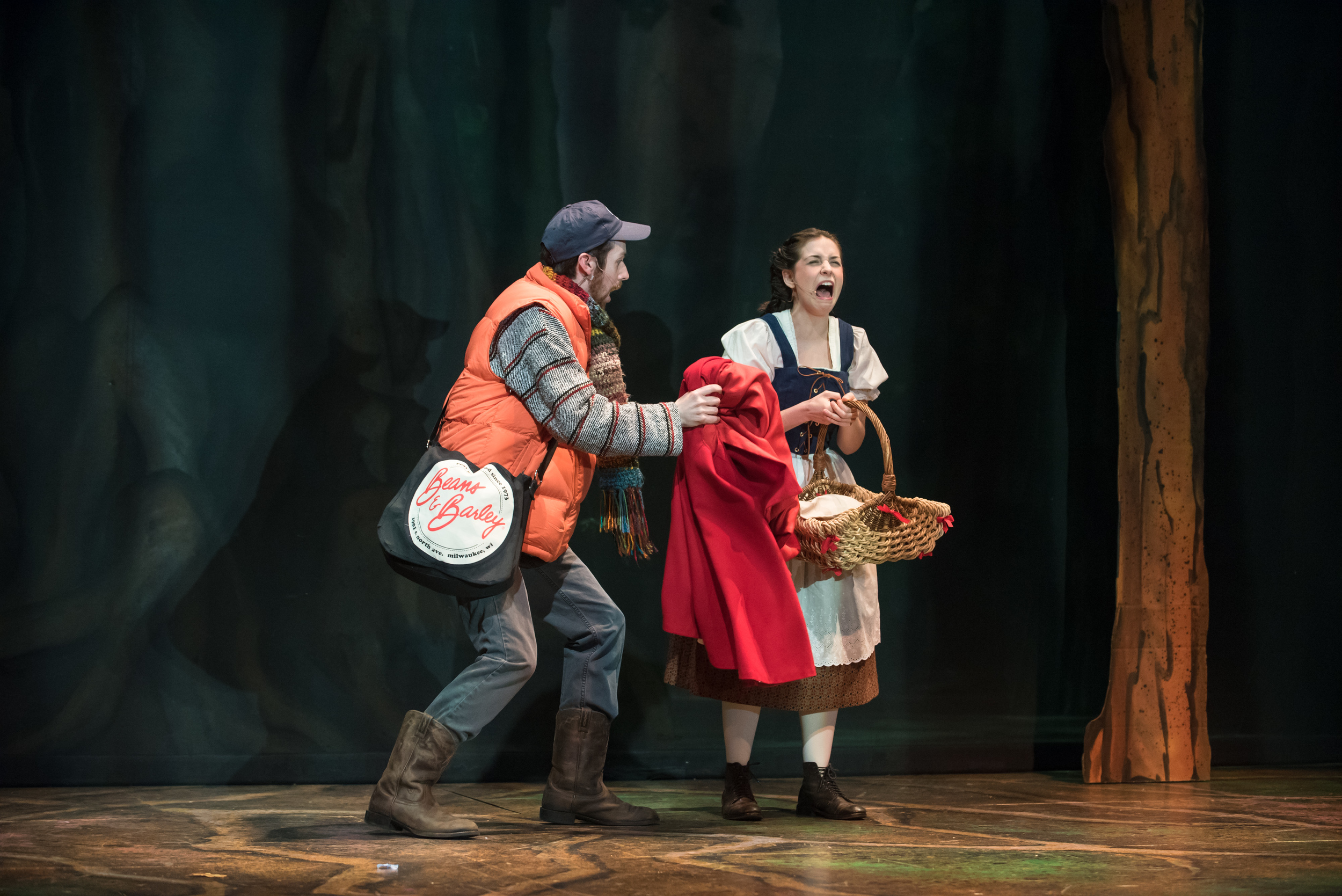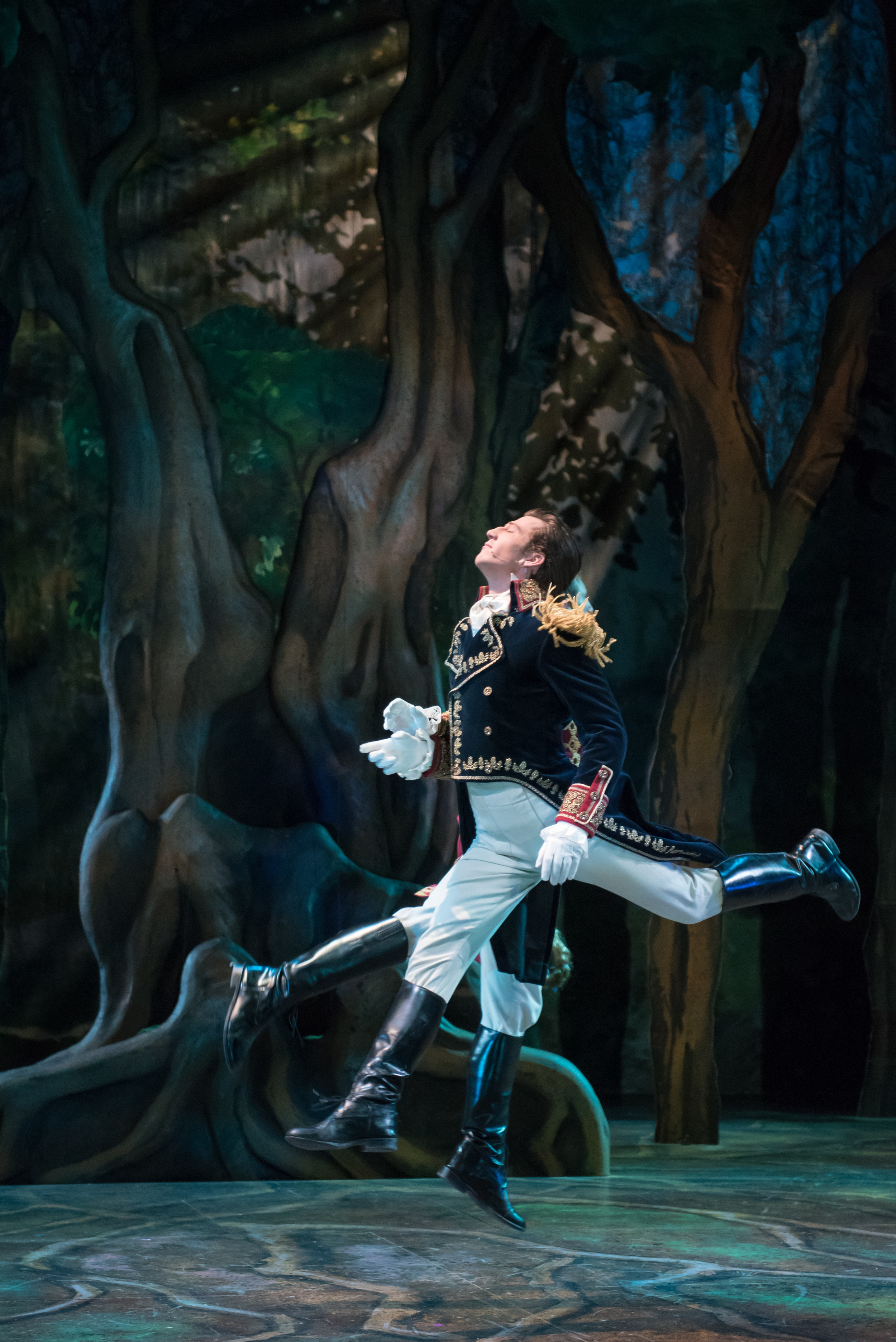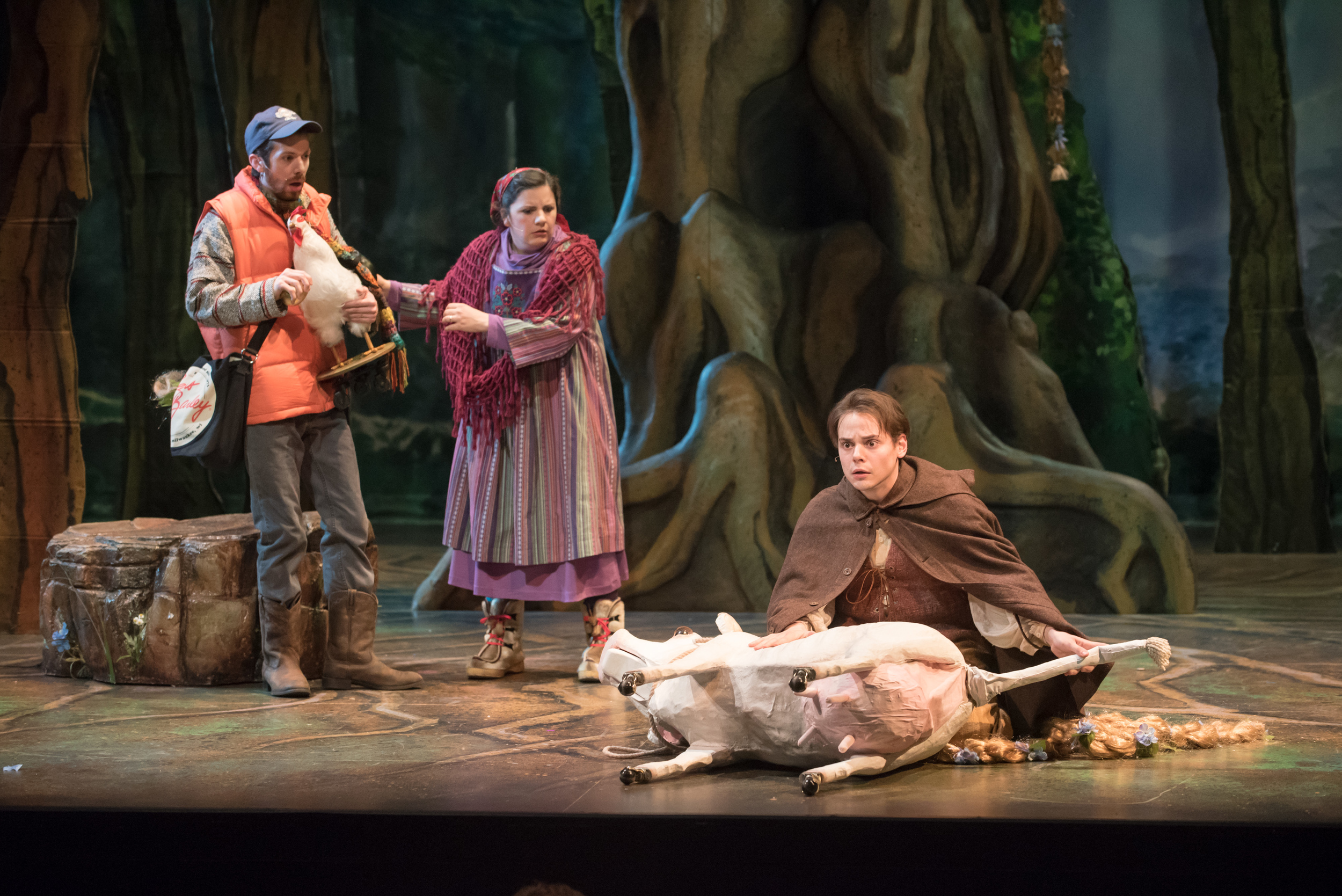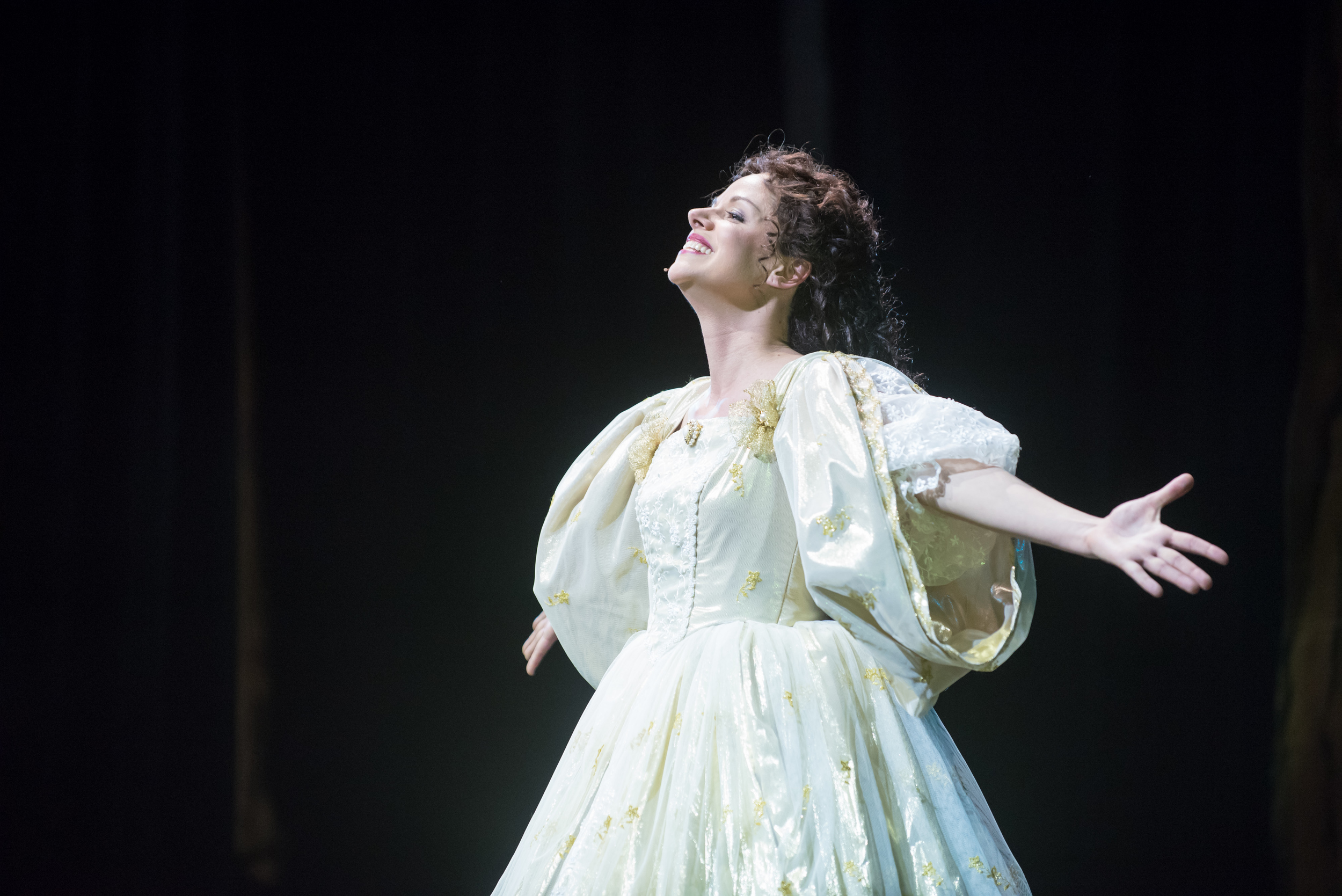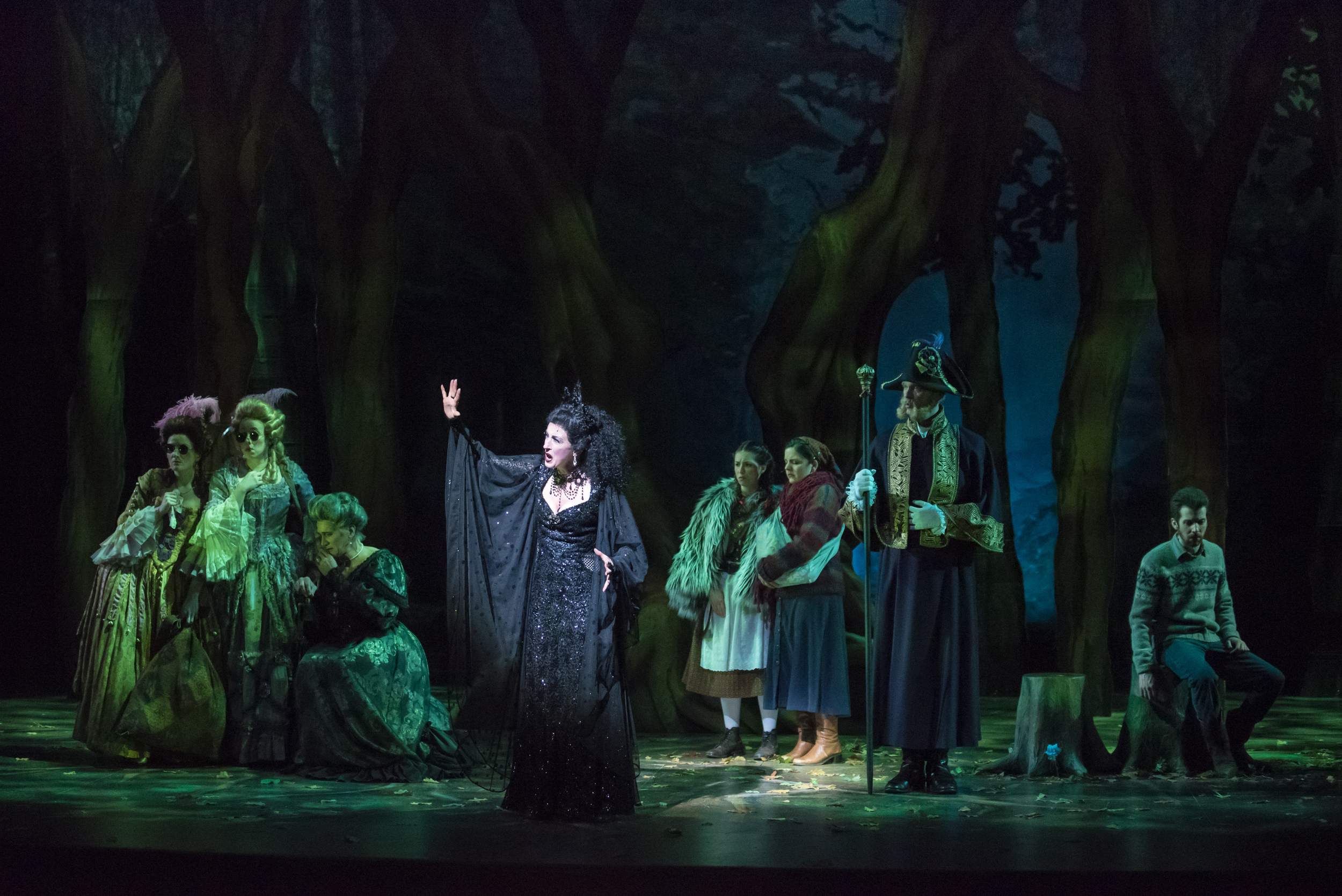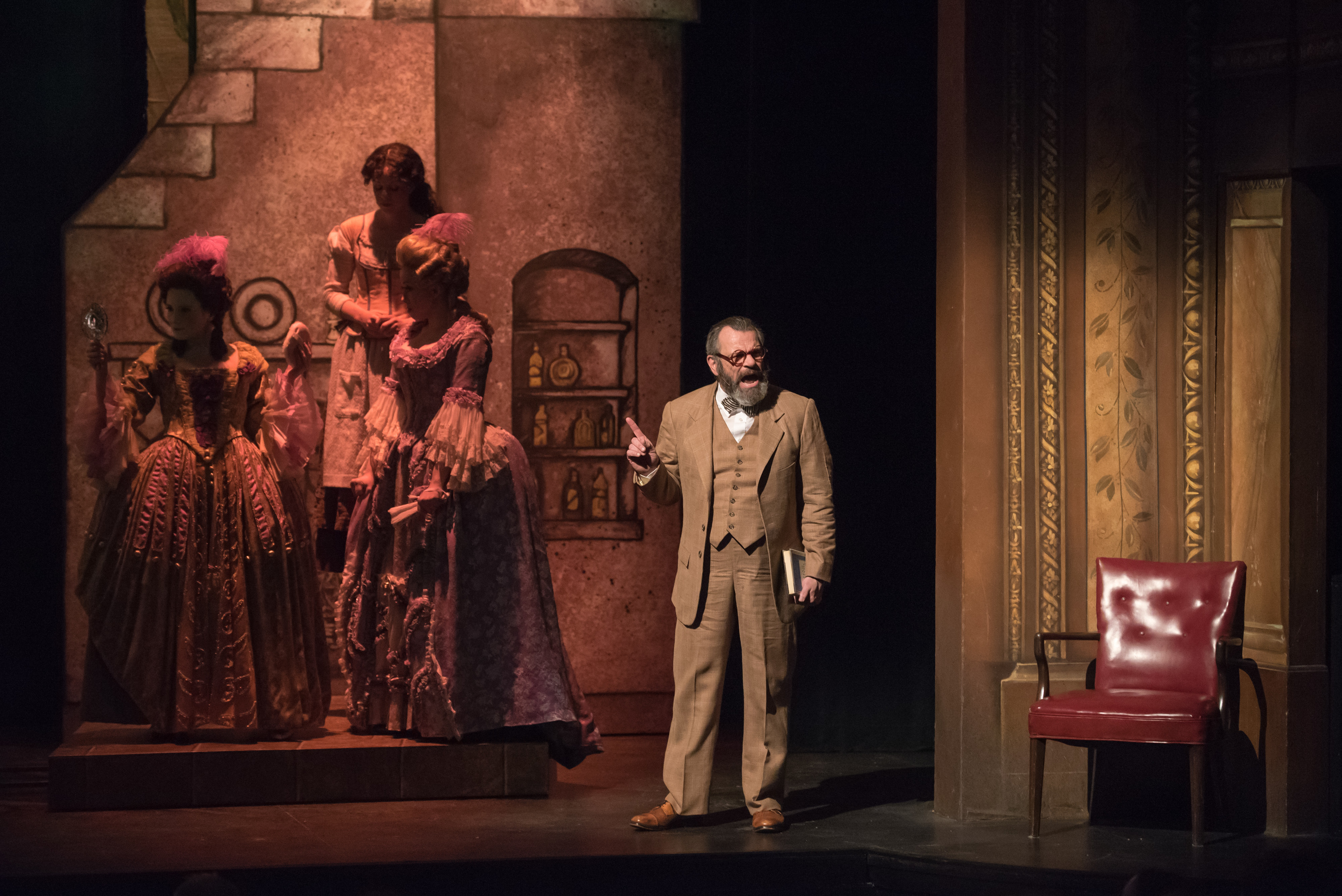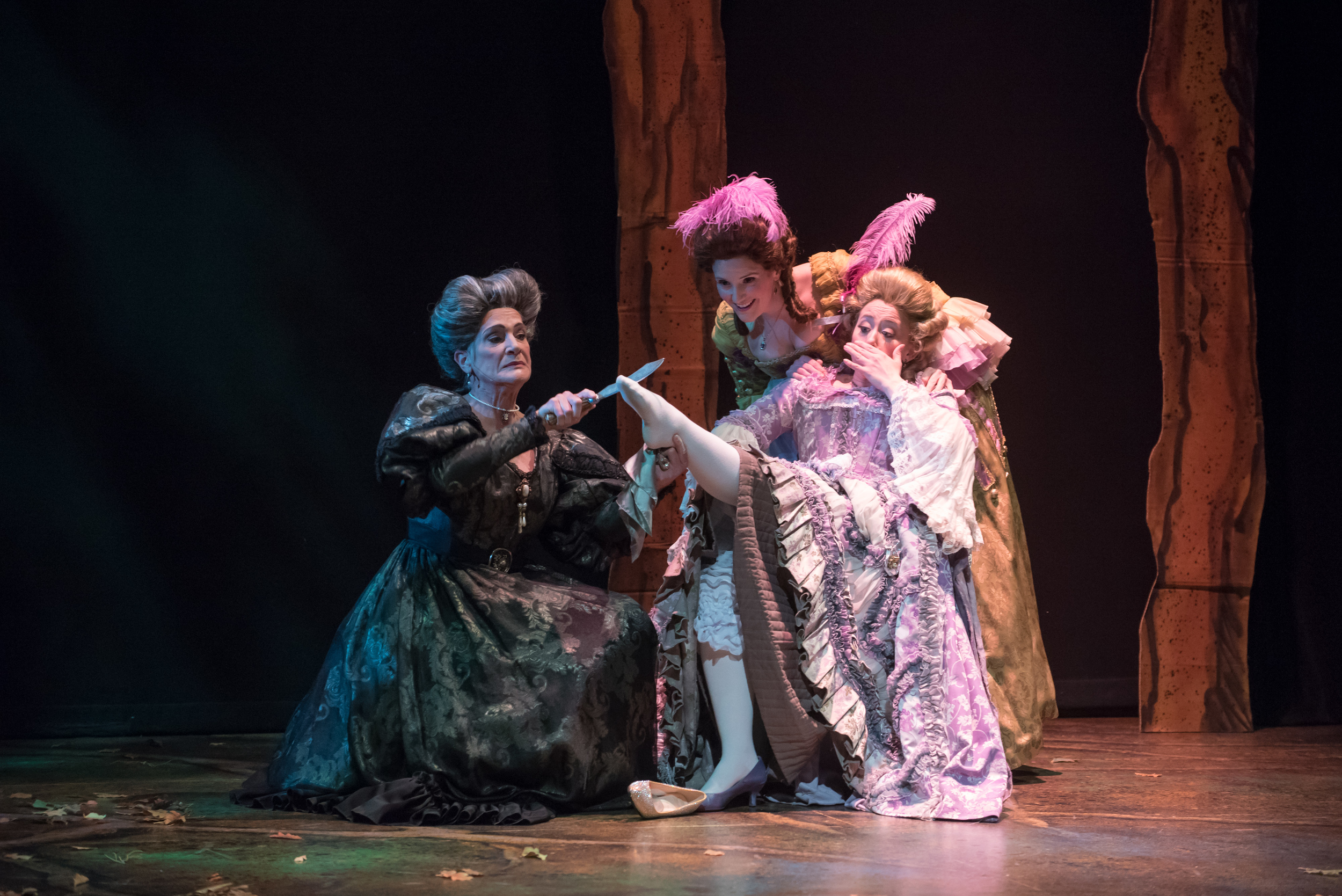Music & Lyrics by Stephen Sondheim
Book by James Lapine
Skylight Music Theatre
Director | Edwin Cahill
Music Director | Mark Mandarano
CREATIVE TEAM
Asst. Music Director | Anne Van Deusen
Costume Designer | Shima Orans
Scenic Designer | Peter Dean Beck
Lighting Designer | Peter Dean Beck
Sound Designer | Gary Ellis
Stage Manager | Kelly Turner*
CAST
Narrator / Mysterious Man | Ray Jivoff*
Baker | Jonathan Altman
Baker's Wife | Karen Estrada
Witch | Susan Spencer*
Cinderella | Natalie Ford
Little Red | Kaylee Annable
Jack | Ryan Stajmiger
Cinderella's Prince / The Wolf | Joe Fransee
Rapunzel | Anna Pfefferkorn
Rapunzel's Prince | Ian Toohill
Granny / Giant / Cinderella's Mother | Diane Lane
Jack's Mother | Rhonda Rae Busch
Stepmother | Liz Norton
Florinda / Sleeping Beauty | Samantha Sostarich
Lucinda / Snow White | Katy Johnson
Steward / Cinderella's Father; Dance Captain | Ryan Cappleman
*Member of Actors' Equity Association
PRESS
"Great comedy, great songs...a very enchanting production...this whole production was more impressive than the [2002] Broadway revival...wonderful!” - NBC morning news TMJ4 RyanJReviews.com
"With stunning sets, masterful orchestration and impeccable performances, Skylight Music Theatre’s production of Into the Woods is a delight....The performers shine under Edwin Cahill’s direction. "- shepherdexpress.com
"The Skylight delivers first rate Sondheim...director Edwin Cahill helps his cast deftly knit all this together with light-hearted wit and lots of musical pop....Other than the two glorious ballads, “The Witch’s Lament” (touchingly sung by Susan Spencer) and “No One Is Alone,” there’s a comic, light touch to the song styles, which works perfectly for the cast and the intimate Cabot Theatre space. It’s good to have Sondheim back again on a major Milwaukee stage, and very good to hear him in such good hands." - Milwaukee Magazine
"Skylight hits all the magical notes with Sondheim's "Into the Woods"...It takes a lot - a lot - to get a theater audience to sit for almost three hours and then rise to their feet as one when time is up to shower accolades on the people who have captured their imaginations for so long. But give those three hours to Stephen Sondheim, a wickedly beautiful cast, spectacular costumes by Shima Orans and joyful and passionate direction by Edwin Cahill, and it's as if you've only been seated for a moment or two. That's the feeling at "Into the Woods," the Sondheim musical that opened at the Skylight Music Theatre Friday night." - onmilwaukee.com
"The renowned musical makes theatergoers' wishes come true in the Cabot Theatre when Skylight Music Theatre locally sources a marvelous cast that will make hearts melt under award-winning Edwin Cahill's direction." - Broadway World
"One of the few out-of-town transplants is director Edwin Cahill, from New York City, and the work he’s done here makes him a worthy addition to the Wisconsinites." - Wisconsin Gazette
DIRECTOR'S NOTES
“Careful the things you say, children will listen.” - Stephen Sondheim, Into the Woods
According to Albert Einstein, “If you want your children to be intelligent, read them fairy tales. If you want them to be more intelligent, read them more fairy tales.” I believe it follows: if you want your children to be the most intelligent of all, bring them to a performance of Into the Woods. In this musical masterpiece by James Lapine and Stephen Sondheim, all the most famous fairy-tale characters collide in a singular story that holds the same power to educate and inspire as does an entire volume of the Brothers Grimm. And while Einstein may have referred to children specifically, it is no secret that beneath the layers of adult haberdashery and serious professional preoccupations, we all remain children at heart. We are all driven by simple needs or wishes like those that comprise the foundation of every fairy-tale.
As most well known fairy tales take place nearby or inside forests, the ‘woods’ are not only the literal setting for our story but also the age-old symbol for darkness (the biggest forest in Germany is still called ‘Schwartz’ or ‘black’), the unknown, and of course the human unconscious. Within these uncharted ‘woods’ the characters of our story must overcome enormous obstacles in order to survive and see their wishes granted. The existence of the ‘woods’ motif in fairy tales throughout the world and even in epic poems such as Dante’s Divine Comedy and in plays like Shakespeare’s A Midsummer Night’s Dream is one of the main ways Carl Jung establishes his theory of the collective unconscious, which explains how part of our unconscious mind has been passed down from our ancestors and is shared by all mankind. It is there, every night in those uncharted ‘woods’ of our unconscious, that each one of us confronts our personal psychological obstacles in dreams and nightmares in order to emerge stronger, wiser, and ready to confront the future the following morning.
Jung’s theory inspired Lapine and Sondheim to combine the plots and characters of numerous fairy tales to expose their common themes and explore the powers and dangers of the ‘collective unconscious’ lurking in these tales. James Lapine also invented a new set of American fairy tale characters who live in these medieval woods but represent a modern, urban, New York couple: the baker and the baker’s wife. In another structural twist, the traditional ‘happily ever after’ fairy tale resolution is broken into two parts between Act I and Act II. The first act tells the traditional stories to the point of ‘happily’ where the original wishes are granted while the second act explores the not so happily ‘ever after’ that results when characters employ any and all methods necessary, including dishonest ones, to see that a wish is granted. (On a side note, one of the main reasons I believe the recent feature film Into the Woods was not universally and critically lauded is due to the disruption of this brilliant binary structure which necessitates two distinct acts in style and structure separated by an intermission as you will see today.)
The chaos and destruction that results in the second act after characters focus entirely on their selfish wishes can only be restored to order and peace when they understand the content of one of the most profound lyrics ever written by Stephen Sondheim:
“No one is alone, truly. No one is alone.”
This is in no way a mawkish line of comfort or reassurance, but a warning that it is only by taking responsibility for the power of individual actions and working together as a community that the characters of the story can find peace and happiness. Sure enough, as soon as the characters realize they are not alone, they are able to defeat the giant and restore order. And similarly, as soon as human beings realize they are not the center of the universe, they too are able to release their unconscious demons and lead more meaningful lives.
As I began the exciting yet daunting task of creating this new production of Into the Woods to close Skylight’s season of fantasy and fairy tales, my first goal was to have as much fun telling the story as possible. To that end, we preserved the fantastical, medieval Black Forest of the original Brothers Grimm fairy tales while also keeping in mind the Jungian undertones that inspired Lapine and Sondheim for their ‘woods’. Our narrator might even resemble a certain, historical interpreter of dreams and ‘woods’. I also embraced Lapine’s American fairy tale invention by fashioning the baker and the baker’s wife as progressive, gluten-free bakers from downtown Milwaukee who will collide with classic characters dressed in iconic costumes of the traditional fairy tales. At the same time, I remembered Sondheim’s statement, “a folk-tale without a moral is merely a whimsy.” And with that in mind, “no one is alone” or the obligation to community is the overriding moral focus of our production.
It is an honor to collaborate with such a stellar creative team and cast in order to breathe life into one of the greatest musicals of the twentieth century. And while Sondheim reminds us “careful the wish you make” it is certainly my wish that Into the Woods will not only bring you some of the joy it inspired in us, but also remind you of the power you have to bring happiness to your community where your ‘wishes are children’.





